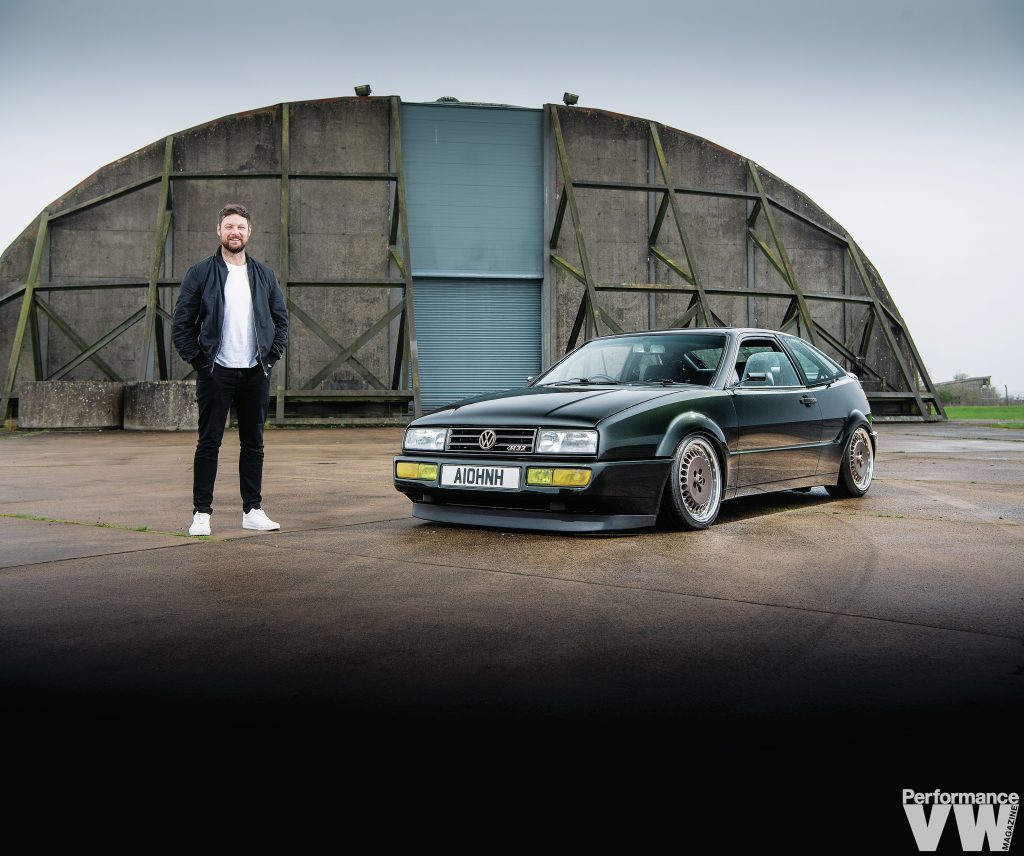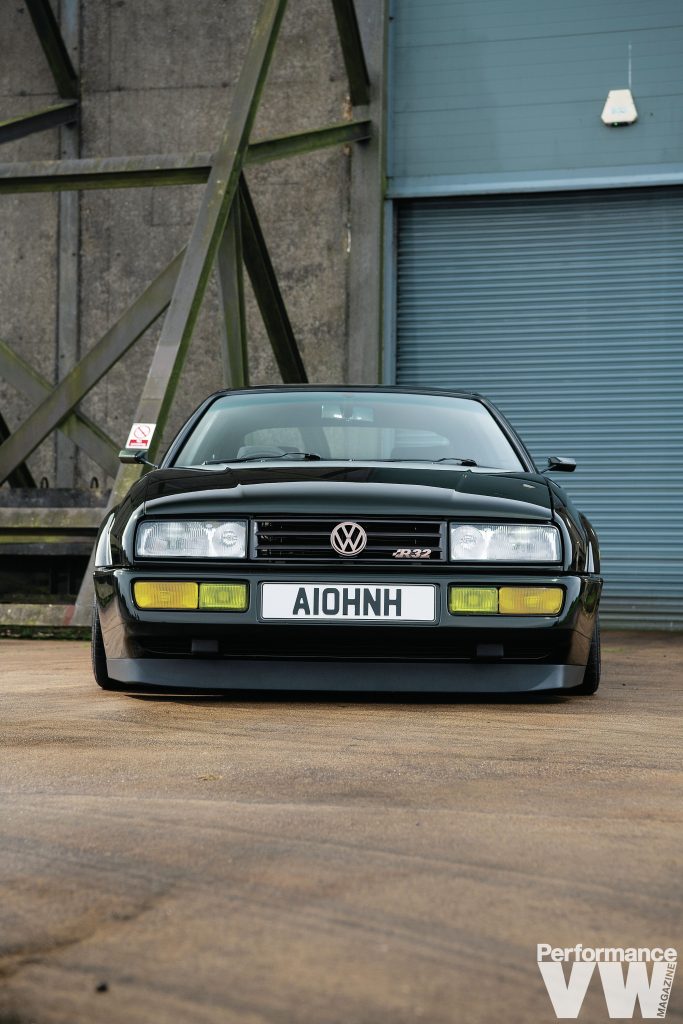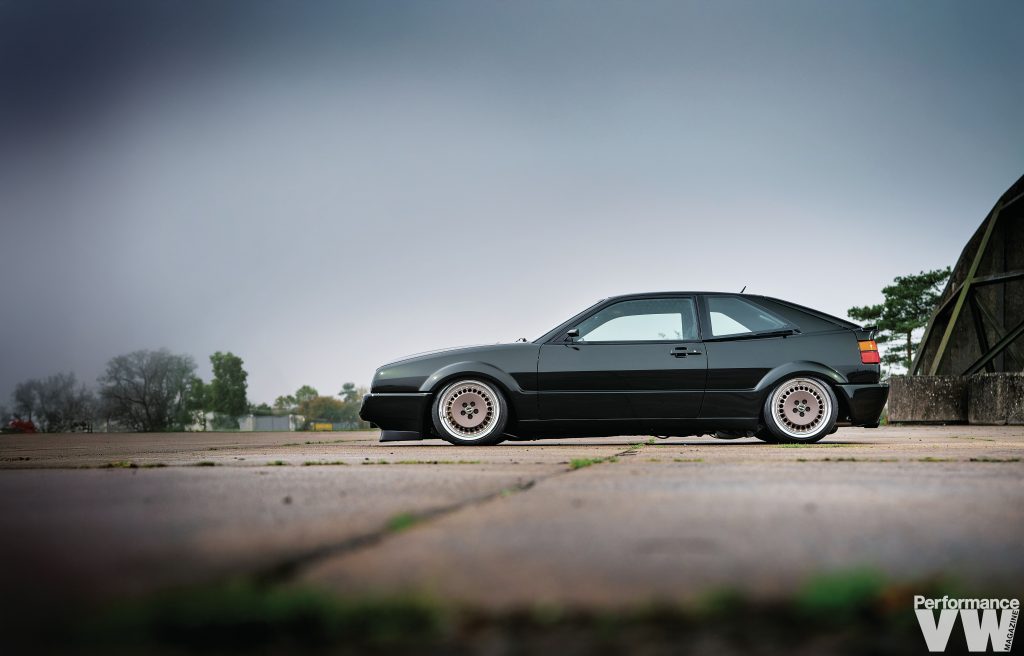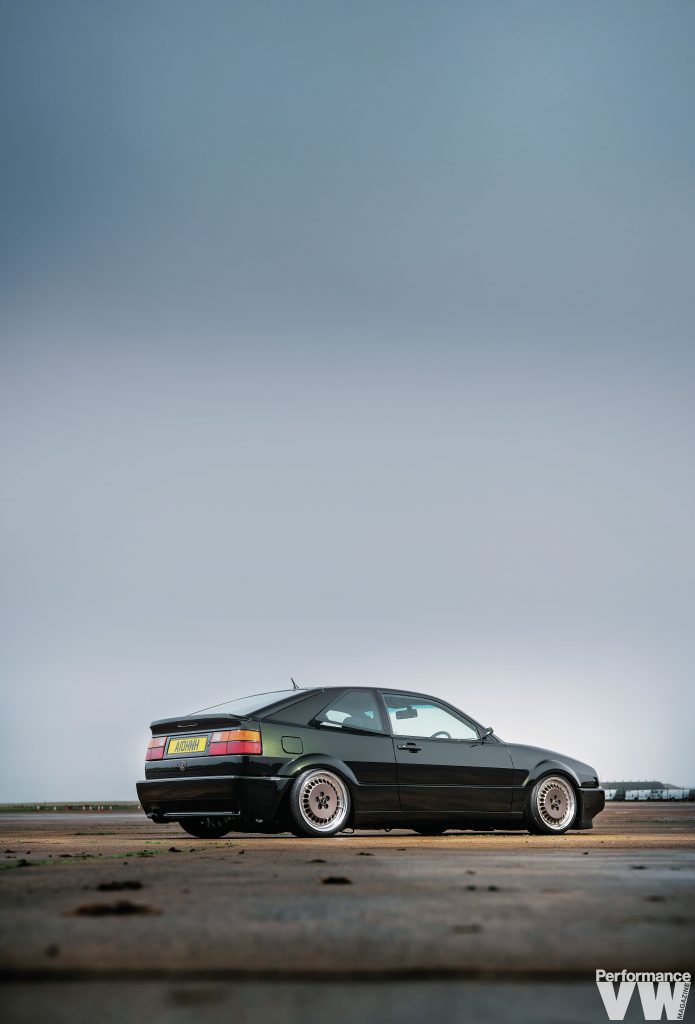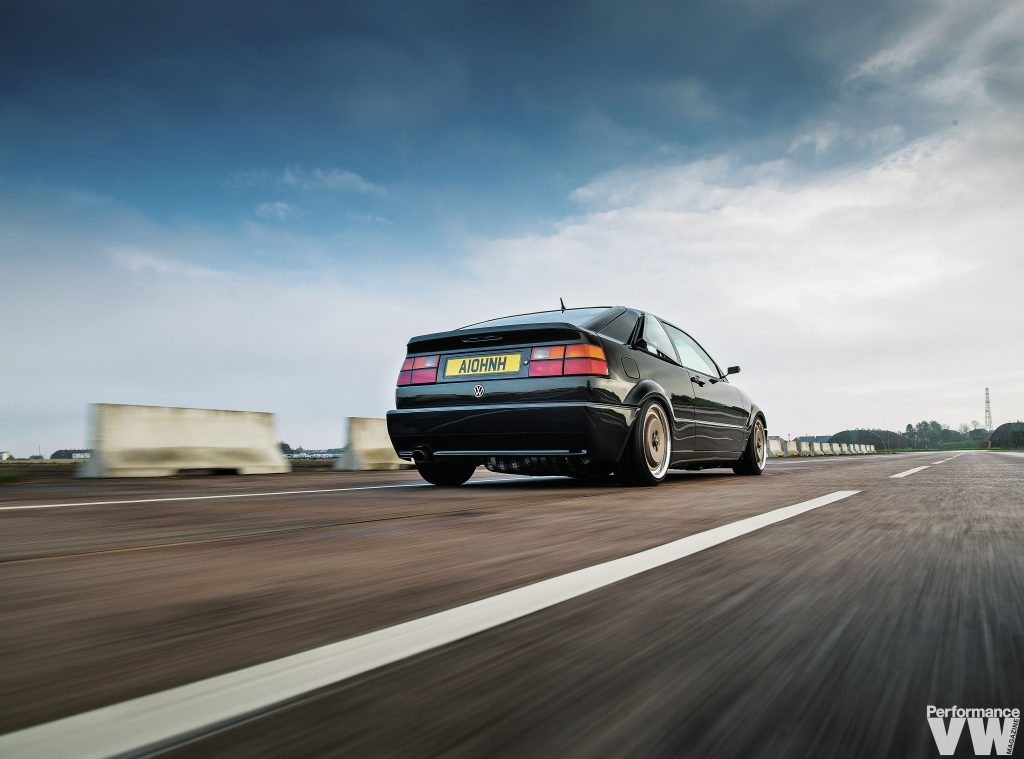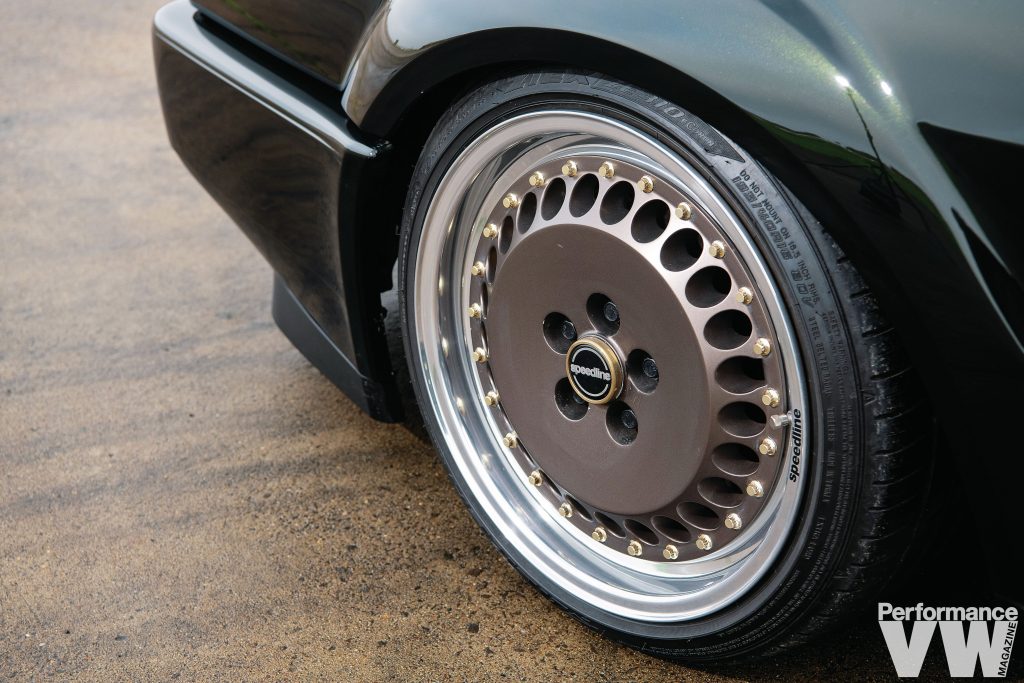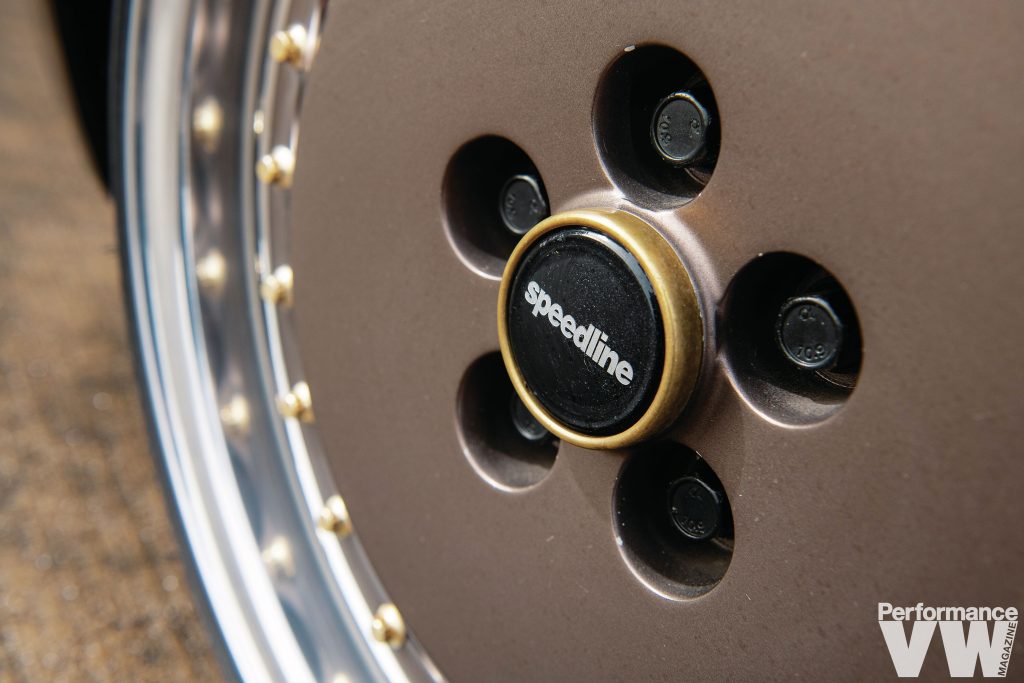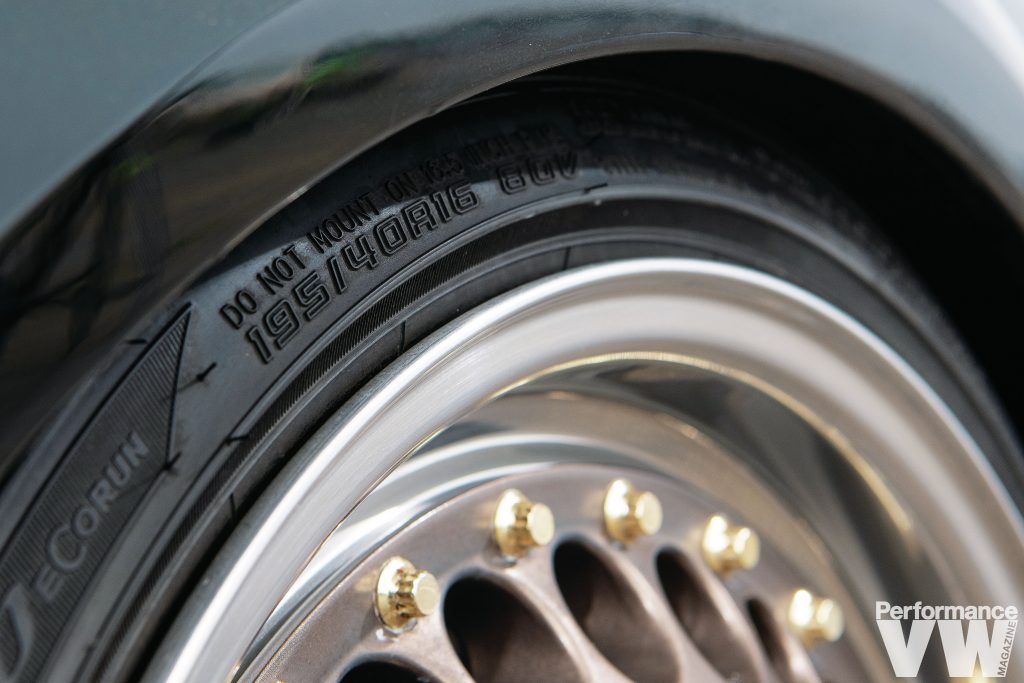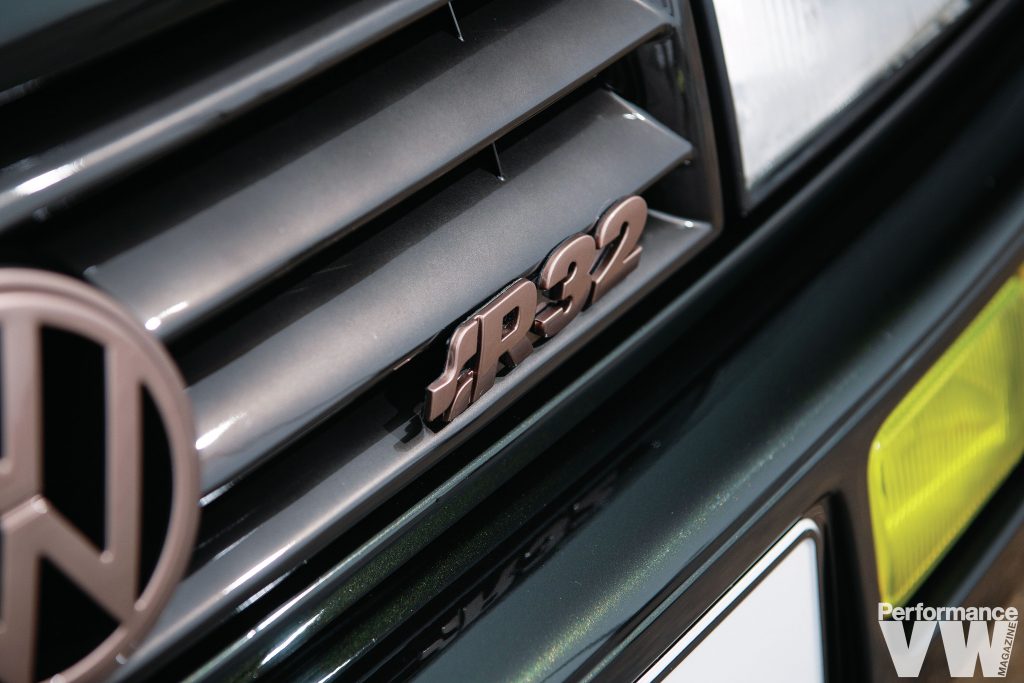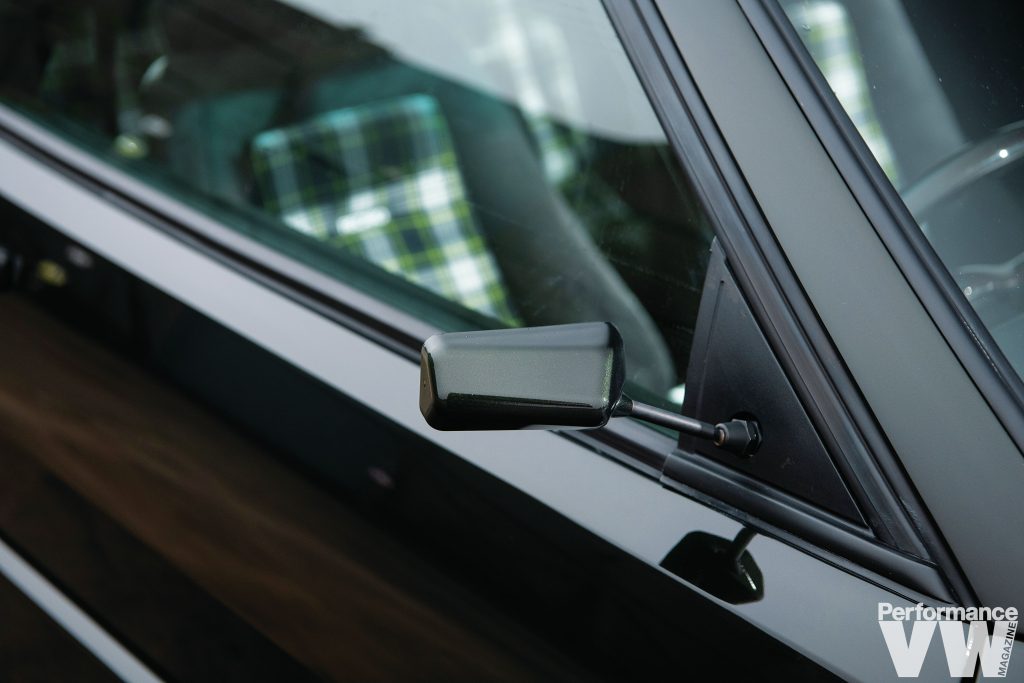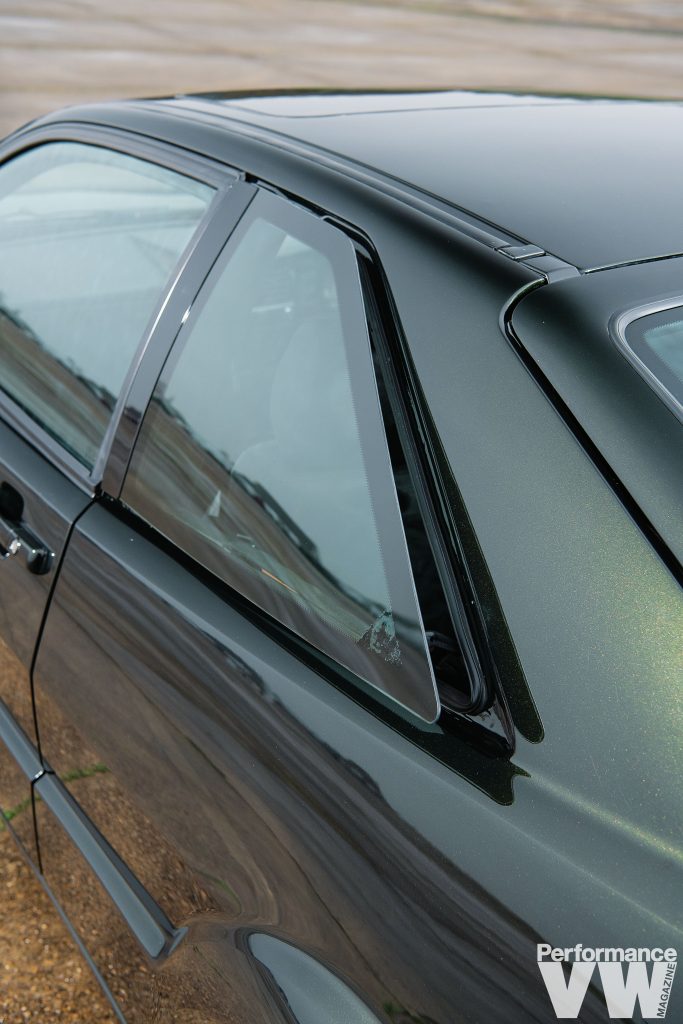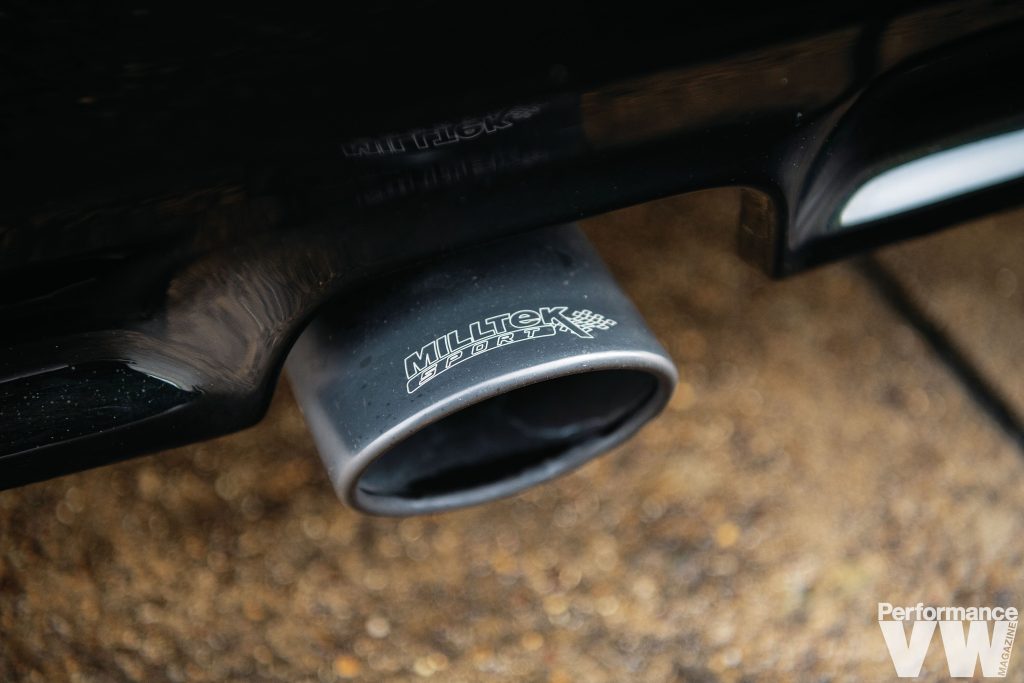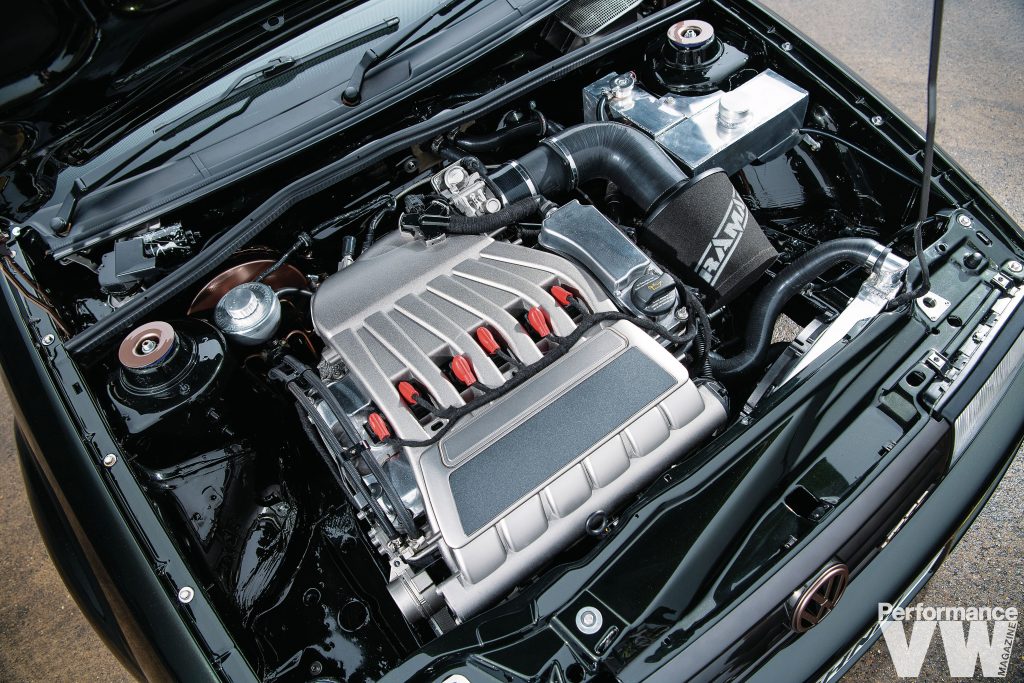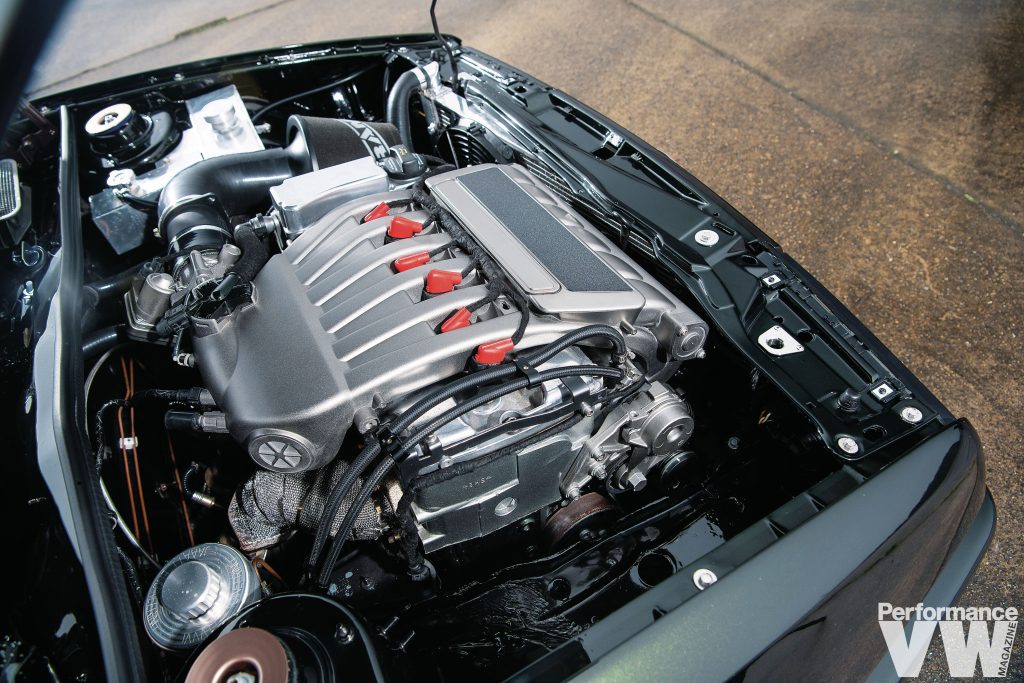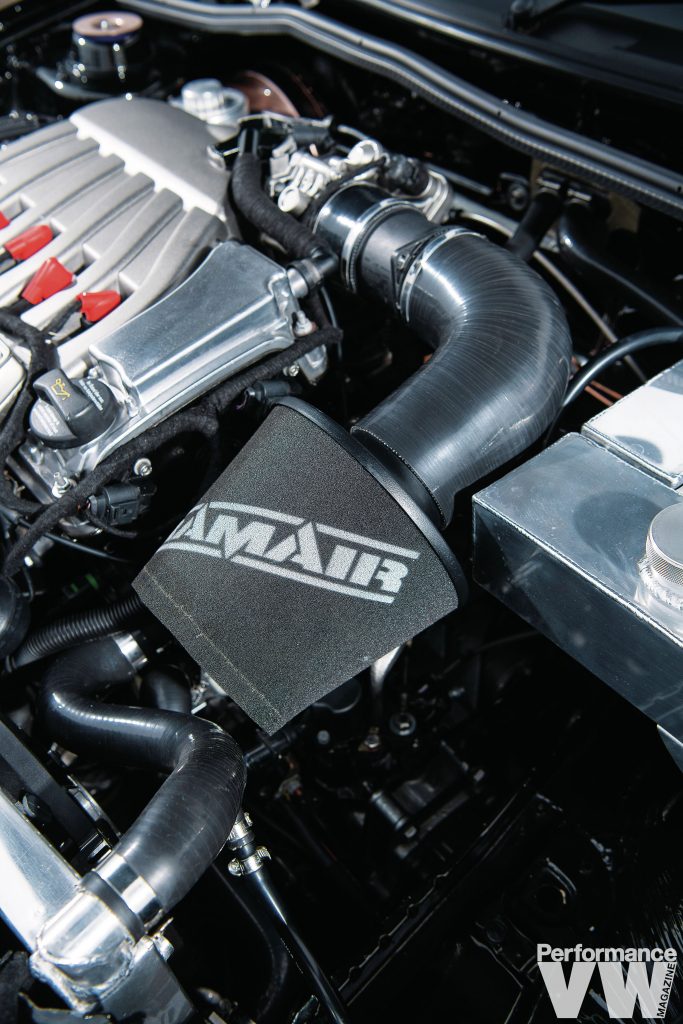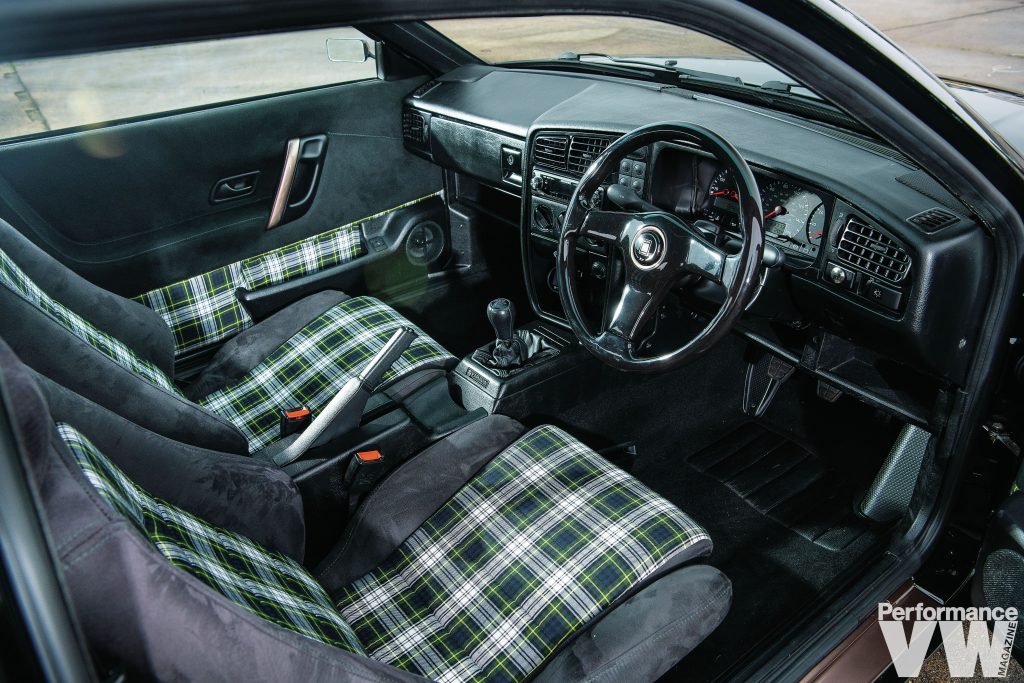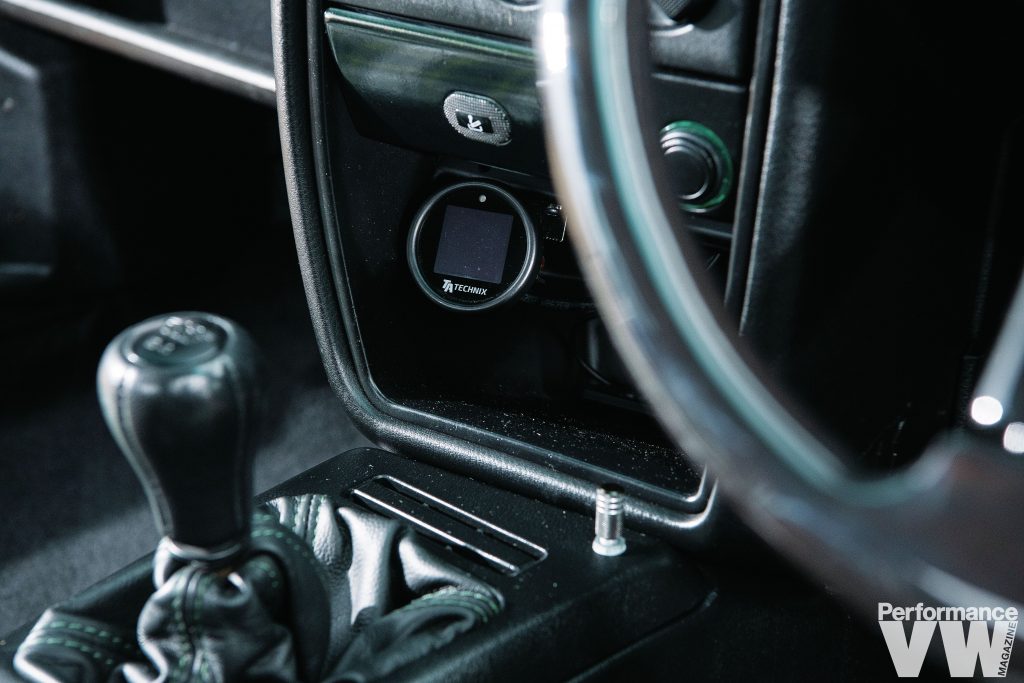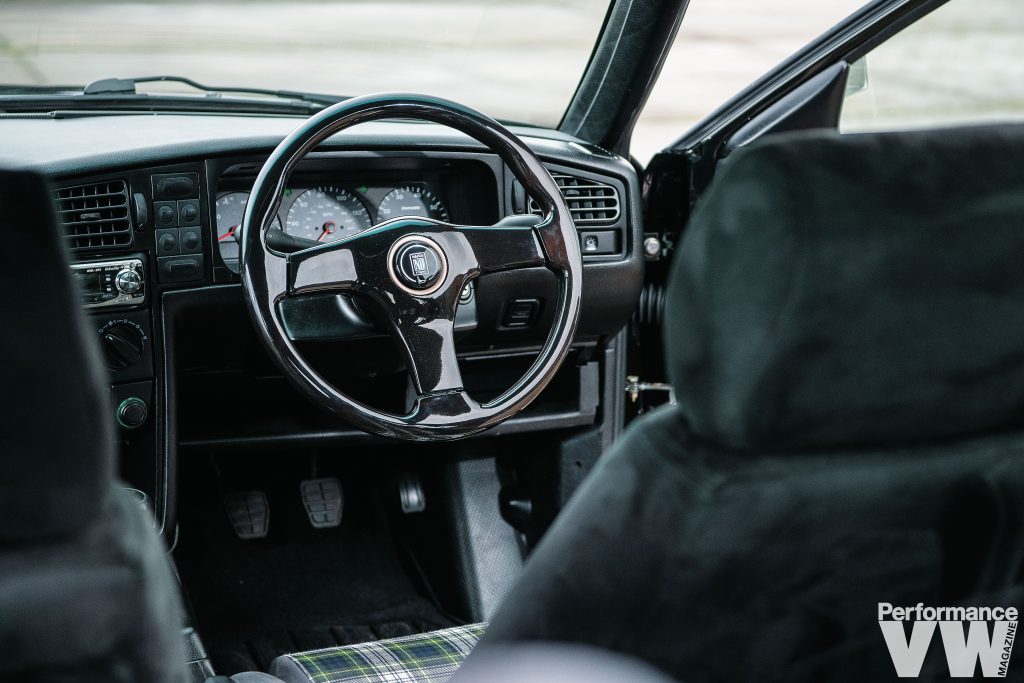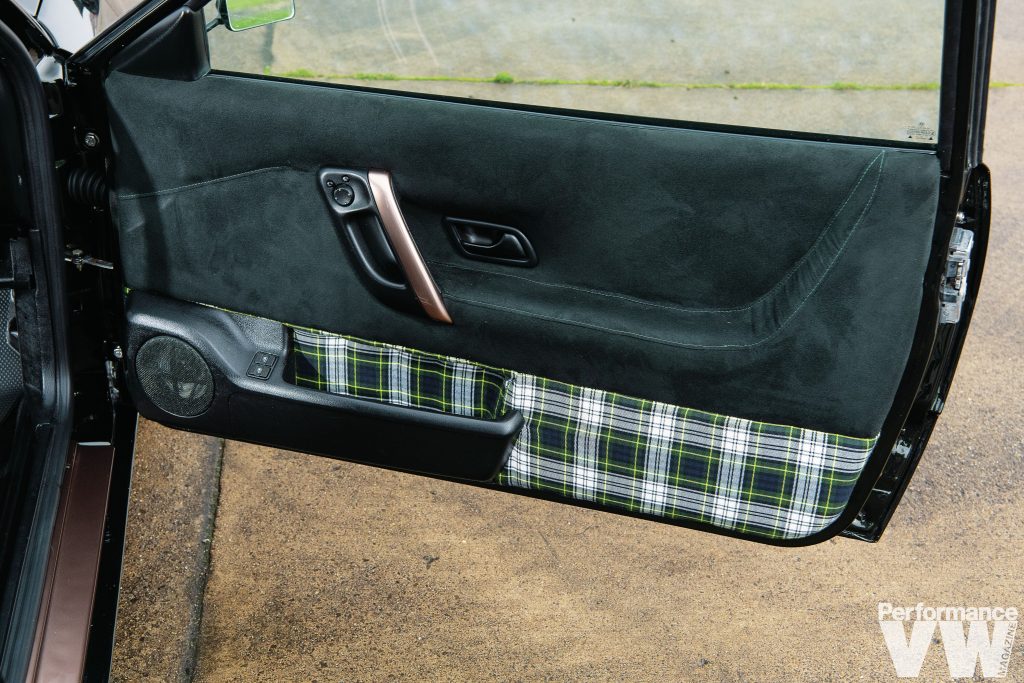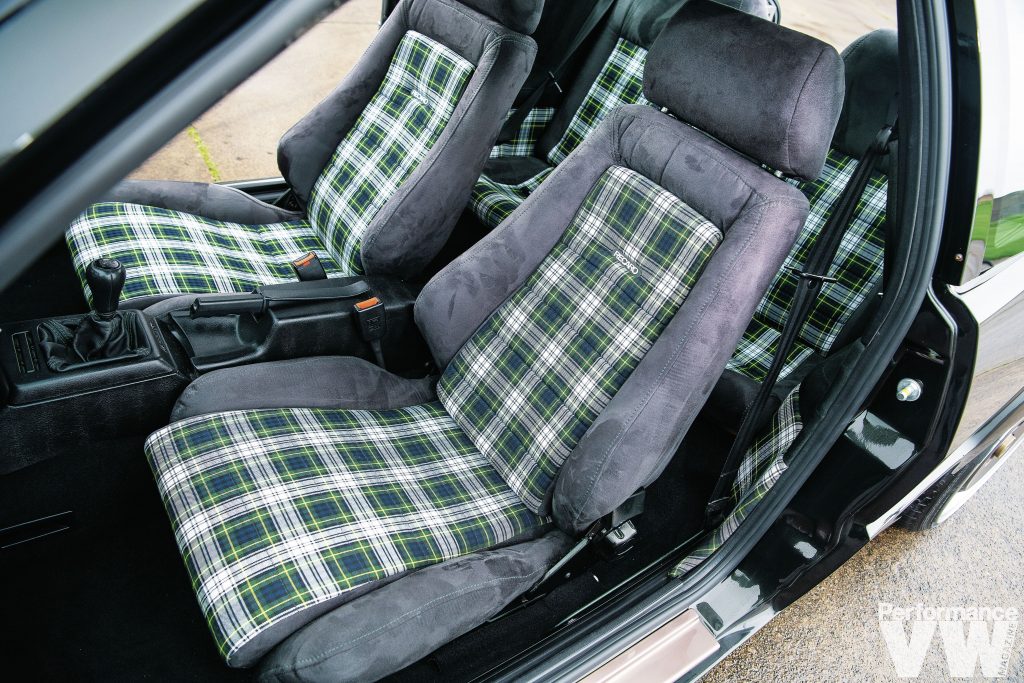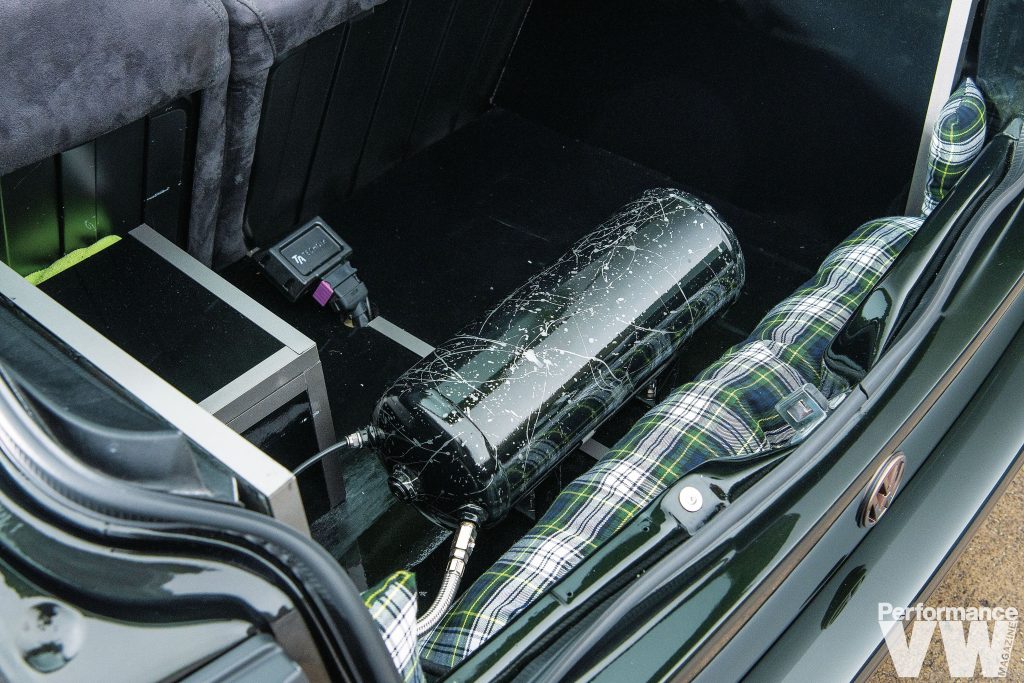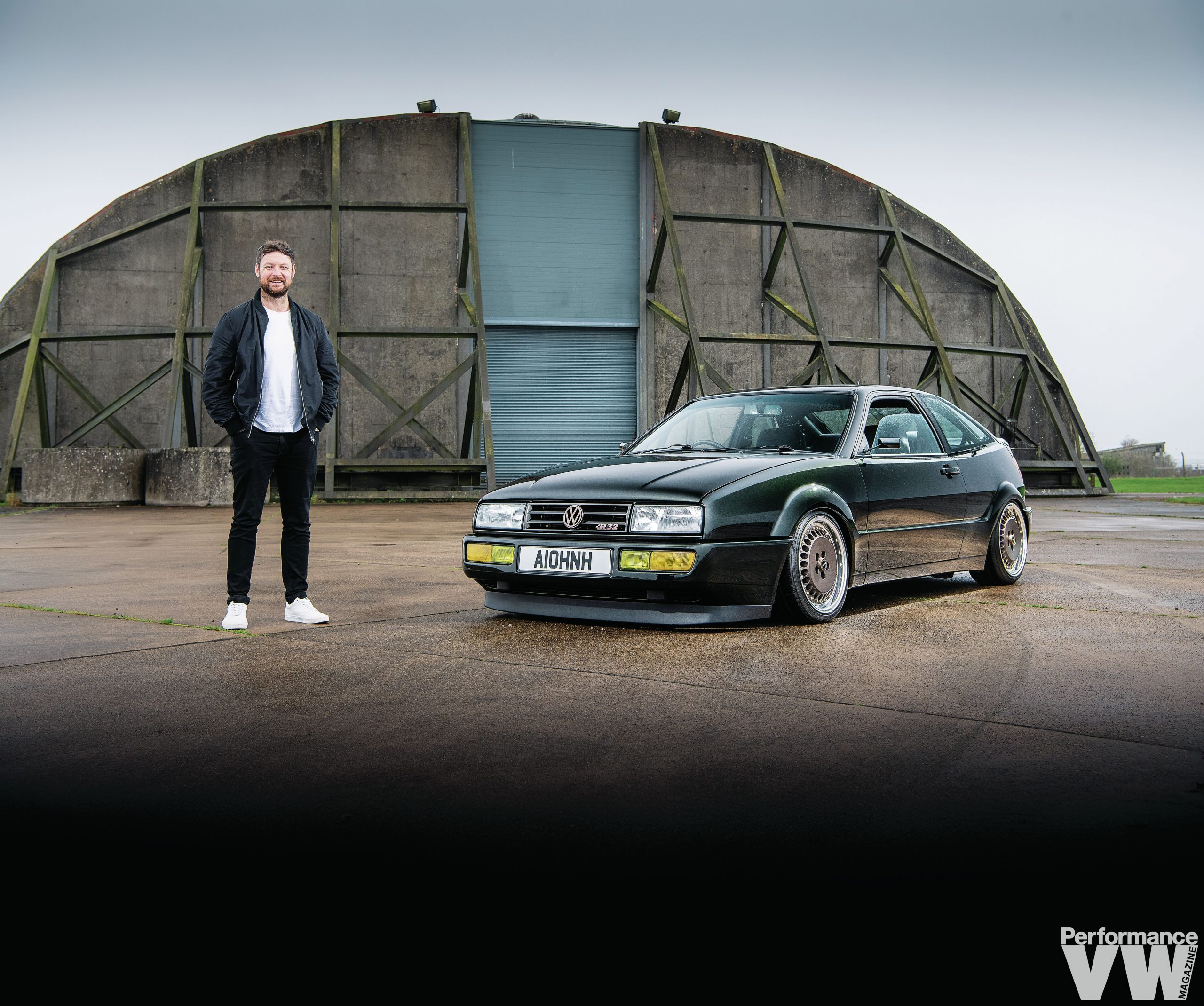
RE-STOCKED
The Corrado might be edging into bonafide classic car territory, but why confine yourself to standard parts if you’re taking on a nut-and-bolt restoration?
The concours d’elegance is not a place for the faint hearted. It’s a patch of the car scene defined by obsession – restorations with down to nut-and-bolt precision, critiqued by clipboard-wielding judges demanding cleanliness that only usually exists in computer-generated renders. There’s no easy way to make the grade, especially when you’re working out those imperfections at home. It’s even trickier blending that concours-standard finish with your own subtly modernised design cues.
“A nut and bolt restoration was something I’d always wanted to do, but I hadn’t been through anything to this extent until I got the Corrado,” explains Alex Fraser, pressing the freshly aired-out coupe’s door closed behind him. “The build took about three years, and it isn’t one for the purists. I’d browse the best Corrados in the world to see what they haven’t done, then sit and look at mine and work out what I could do. It’s my take on the car.”
This sort of home-grown finish doesn’t come easy, and Alex isn’t a professional car fettler. The auto industry did its best to lure him in – storing a previous project at the garage where he was working netted him an apprenticeship – but the dealership environment was never a natural fit. Instead, he’s taken a sideways step, earning a living as a scaffolder while keeping cars as a wheels-and-suspension hobby. At least until recently.
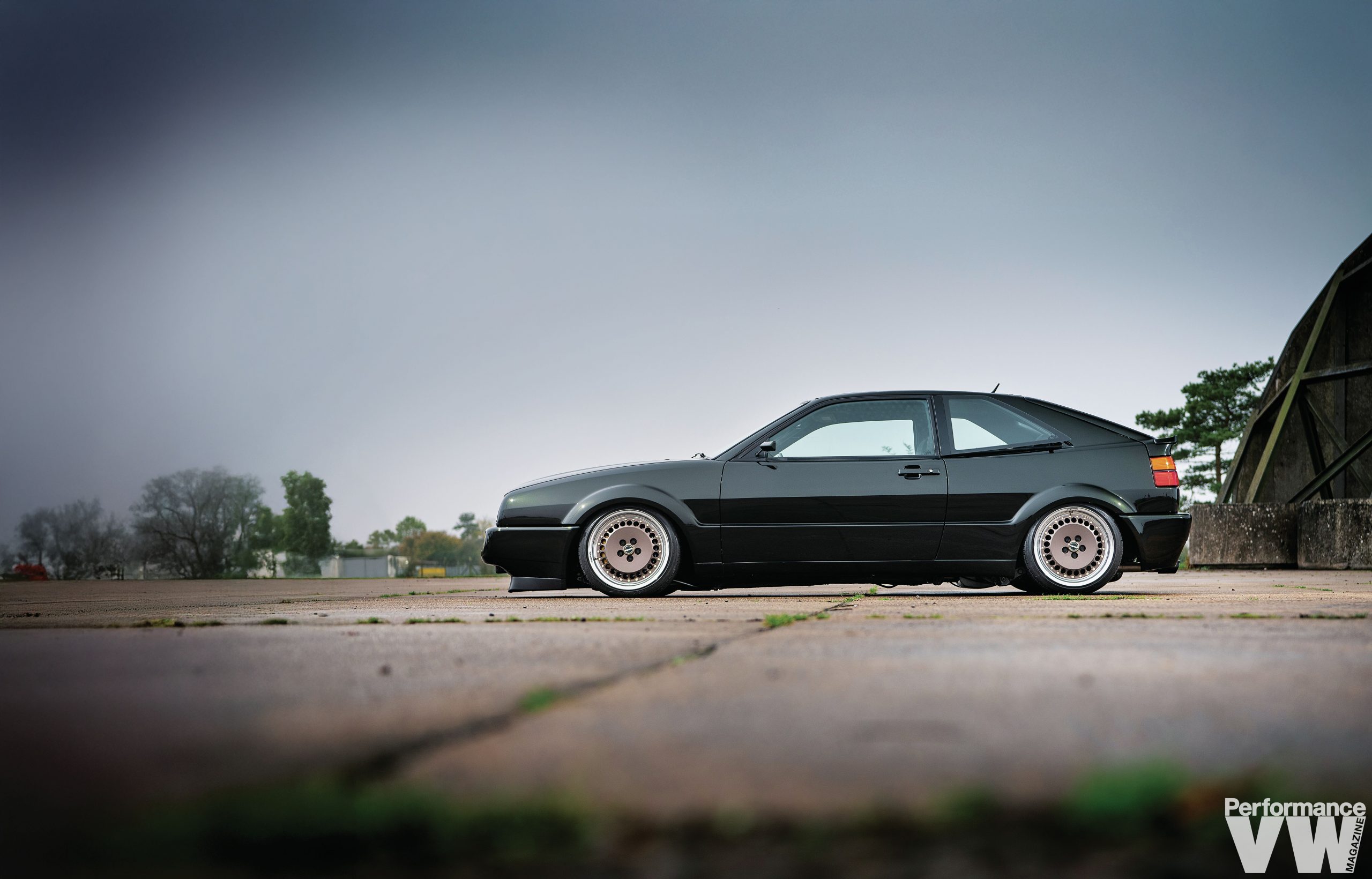
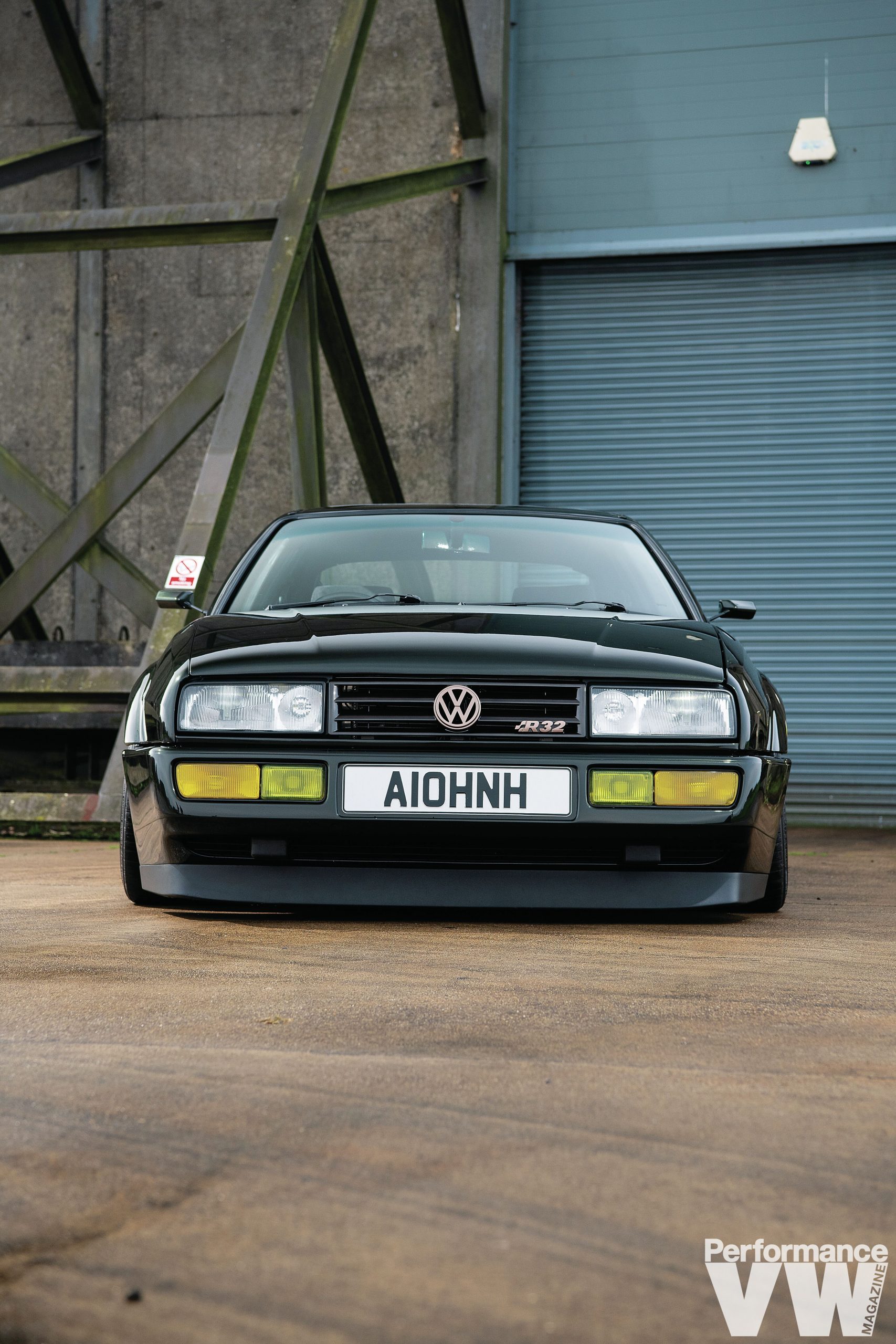

Corrados weren’t top of the wish list when this story began back in 2019. A tired Renault 5 Turbo was the first candidate, but he quickly realised it wouldn’t satisfy that urge for a full restoration job and sold it back to its previous owner. Volkswagen ownership was a combination of geography and timing, the result of a white ’93 Corrado 16V twitching the automotive grapevine in his hometown of Banbury. Within a week of selling the Renault, the coupe was tucked away in his cramped council garage ready to be torn down – a process that became a lot easier when a friend offered up his half of a shared barn nearby. And it’s there where most of the transformation took shape.
“It was always going to be an R32. My mate Adam was one of the first to have one in a Mk2 Golf, and I fell in love with the idea. Another friend had bought a TT engine to convert his Mk2 but didn’t get around to it, so I offered him some money and didn’t even have to travel anywhere to pick it up,” he continues.
“A rebuild wasn’t part of the plan, but I had time on my hands during one of the later Covid lockdowns, so I thought I’d take the engine apart. At the time I didn’t know anything about the R32, or the VR6, but I was semi mechanically minded so thought I’d give it a try. I was just going to paint it, then I’d decide to change the chains and that’d be it. When I started, I ended up taking the whole thing apart.”
It’s an investment in reliability rather than massive power. The engine is pretty much stock internally, but now equipped with a Ramair induction kit, Milltek exhaust and de-cat downpipe, and the whole lot dropped straight into the Corrado’s bay with a five-speed VR6 ‘box. Well, almost. Keeping the R32’s twin fans meant re-aligning the radiator to avoid clearance issues.

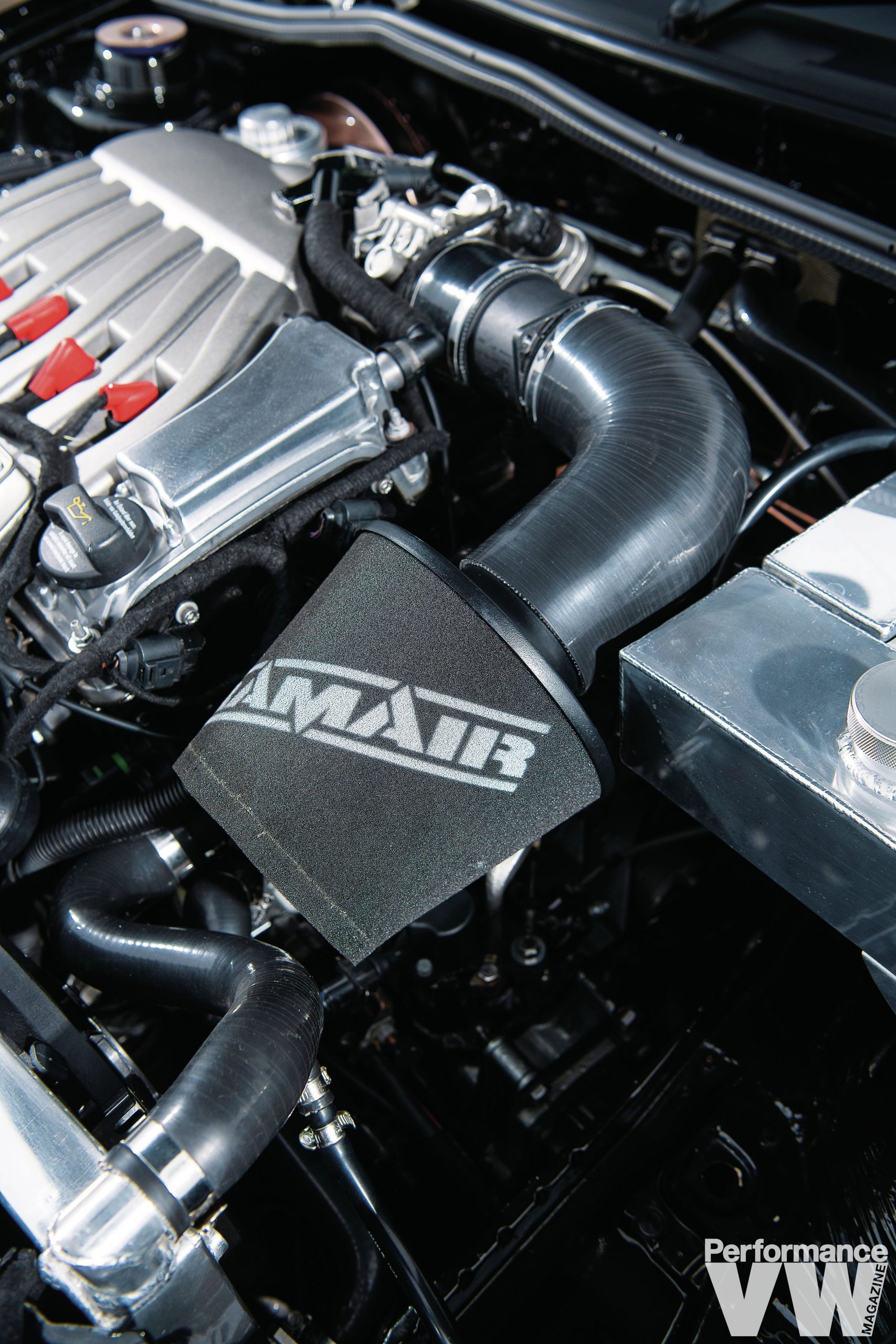
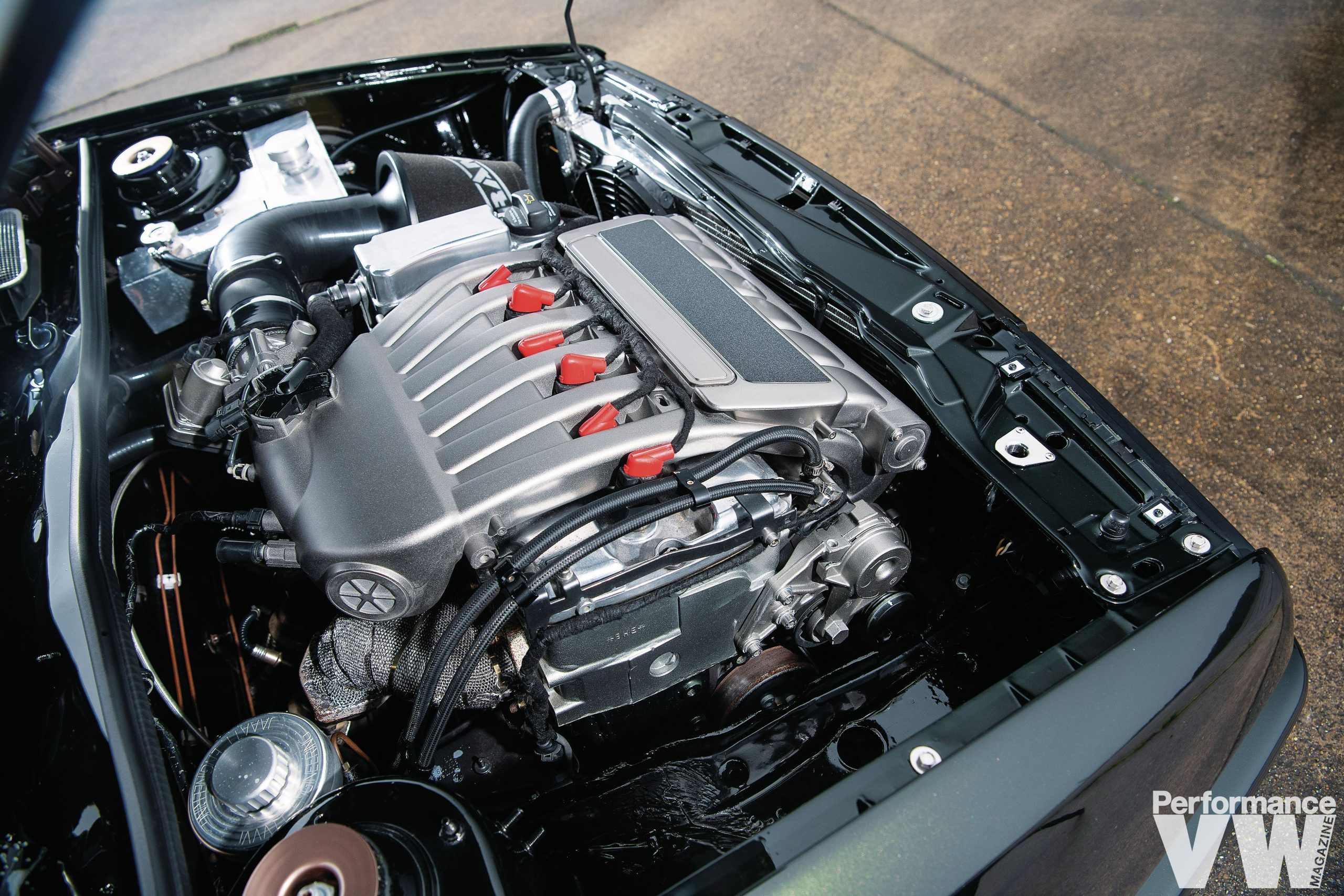
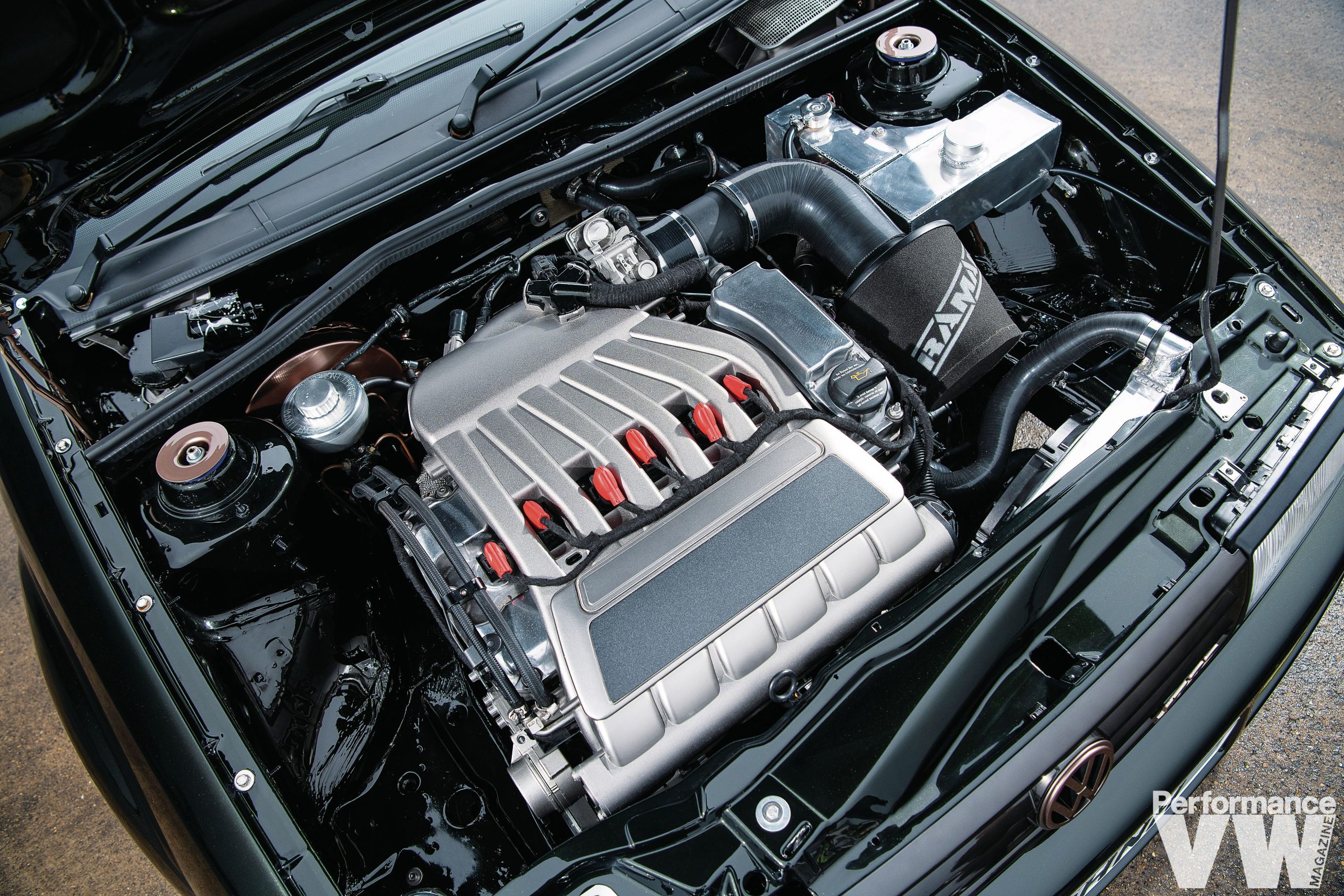
Show-standard builds often tuck the clutter out of sight, but every element of this OEM+ conversion is on show – which meant it had to be flawless. Alex learned to paint during the early stages of the build, applying a neutral colour to almost every bolt-on part, before carefully shaping ten feet of brake hardlines to route them around the bay. The custom-made tanks (for screenwash, coolant and power steering) are the only really obvious signs of going beyond factory spec.
“If I was starting again I’d buy a VR, because all of the R32 stuff bolts on quite well,” he tells us. “I didn’t have that, but Banbury is a small-ish town, so you catch wind of people selling stuff, and someone will catch on if you’re looking for something. Someone I knew was selling pretty much all of the gear I needed – the brakes, five-stud hubs, wishbones and subframe – all in one package. That helped a lot.”
Take the engine bay as a hint of the attention to detail underneath. All of the VR6 parts were powdercoated before finding their way back onto the car, finished in a neutral grey to highlight the work involved while avoiding clashing with the still-undecided body colour. You’ll spot a hint of Porsche yellow calipers through the spokes of the wheels, while the steering rack is new and there’s a full set of Powerflex bushes reviving the coupe’s factory sharpness. TA Technix air ride was the finishing touch, including presets for cruising and tucking wheels at shows.
From bumper to bumper, all of the hardware is new. “That was quite a task, because I wasn’t buying that stuff from Volkswagen. I wanted everything in stainless steel so it wouldn’t rust, so I lost months measuring bolts, working out what grade they needed to be and then sourcing the right ones. That was probably the hardest part of the build,” he recalls.
That’s saying a lot when you get into the details. Alex set himself the task of finding an alternative to BBS wheels and stumbled across a set of 14-inch Speedlines from an Alfa Romeo 75 on eBay. They’re barely recognisable, sized up to 16 inches and converted to split rims after carefully measuring the Corrado’s wheel wells for space. It took two attempts to get the rears sitting right, not helped by factoring in a set of adaptors to correct the 5×98 stud pattern to a Corrado-friendly 5×100. As always, the wheels maketh the car.
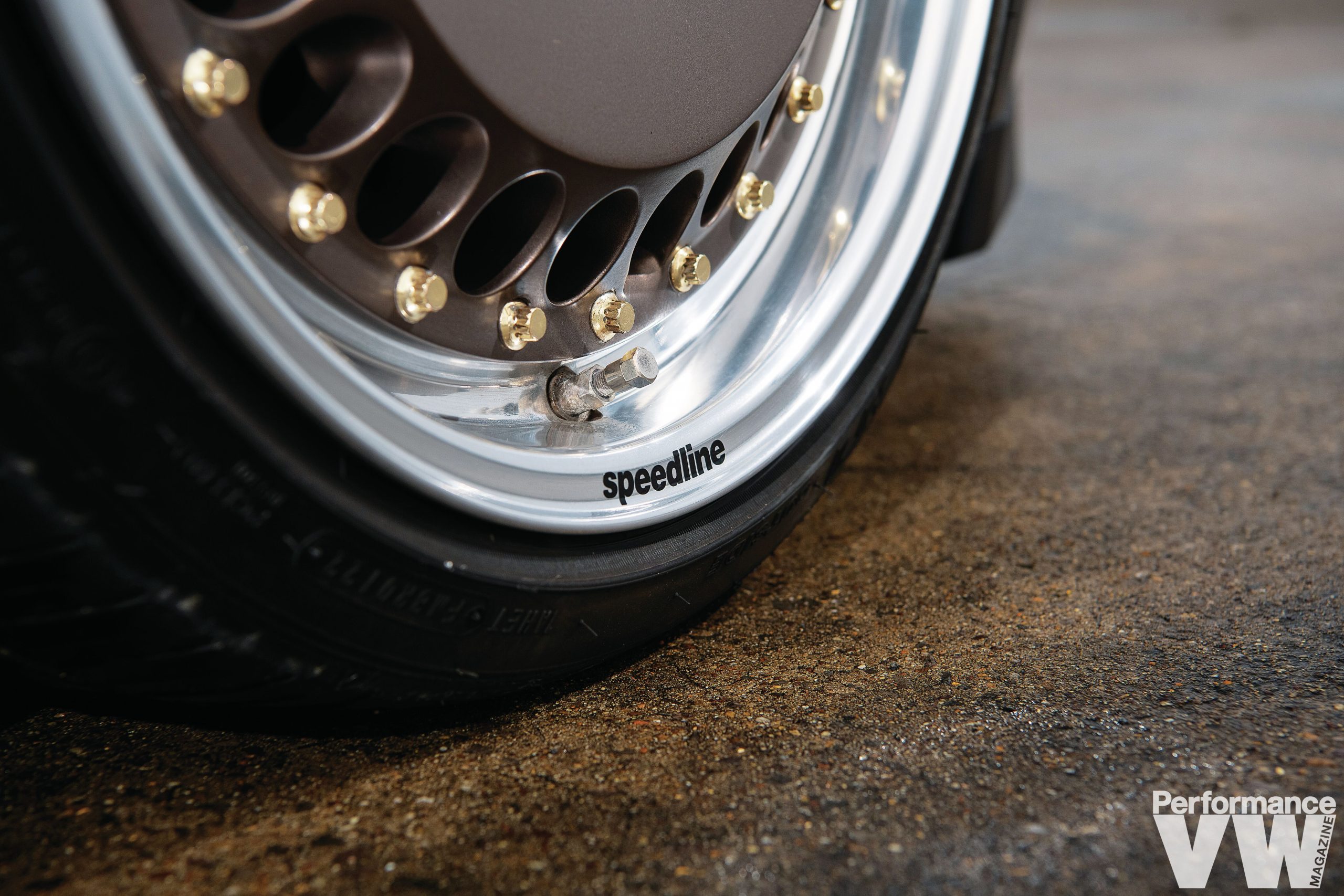
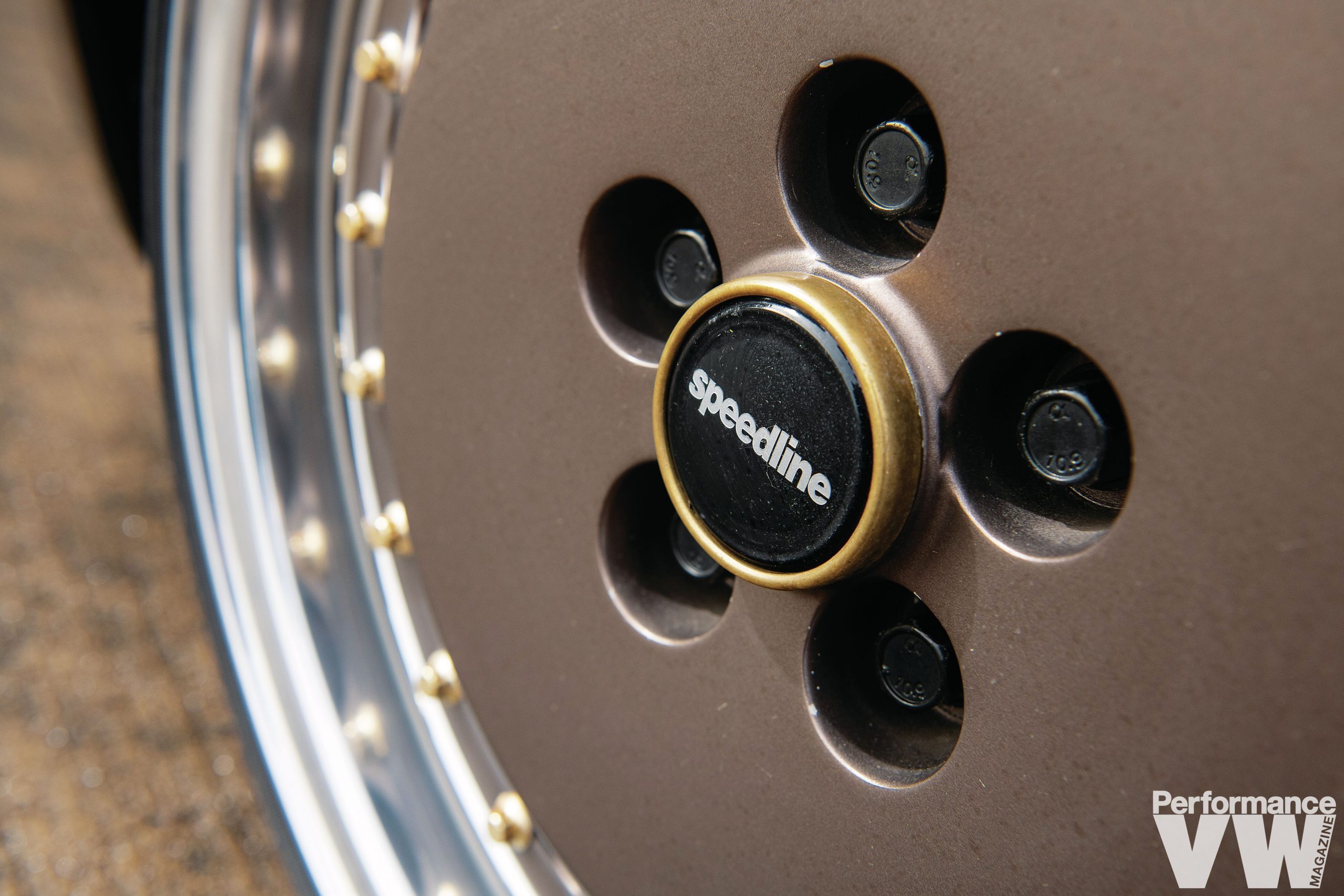
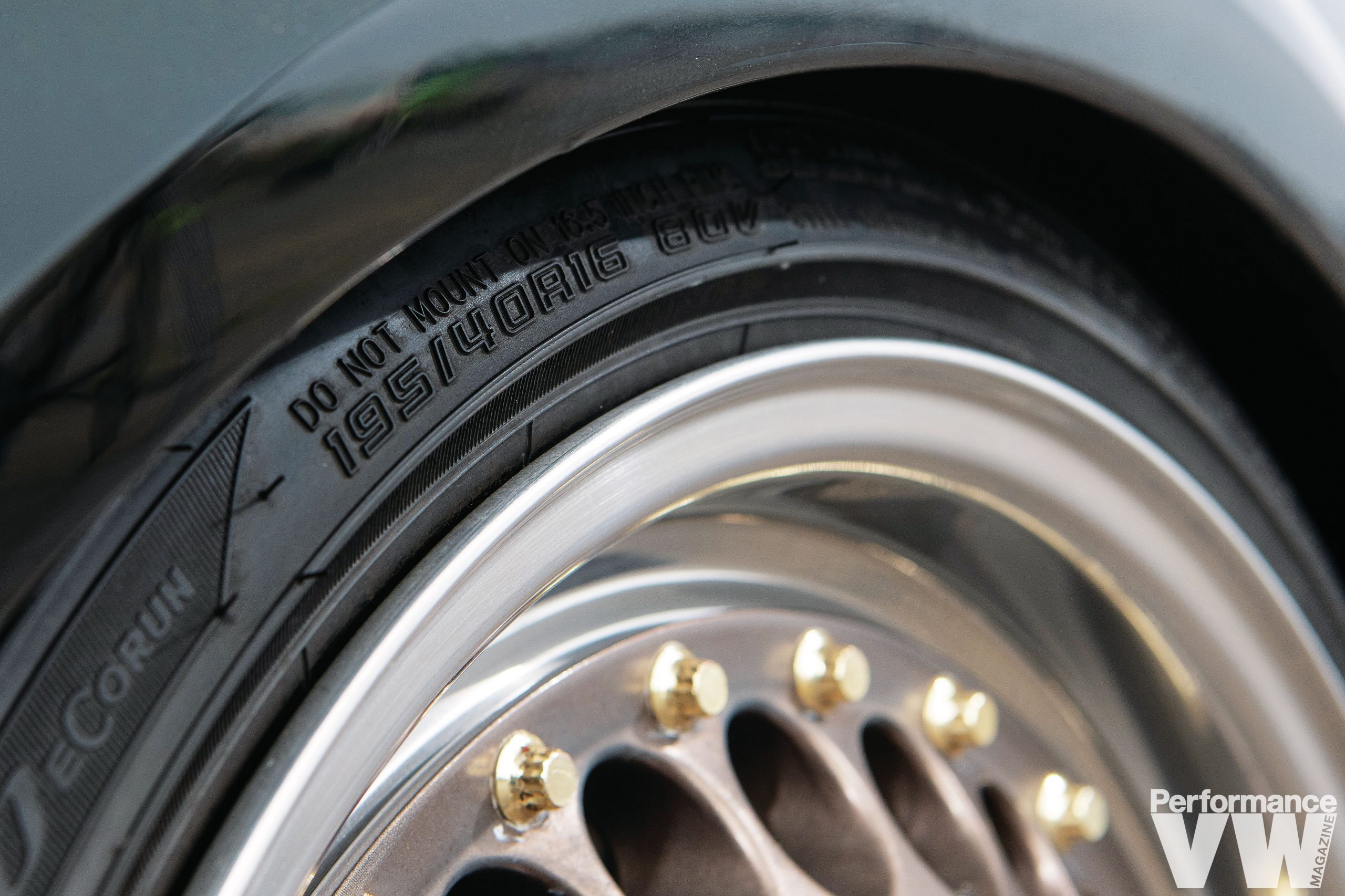
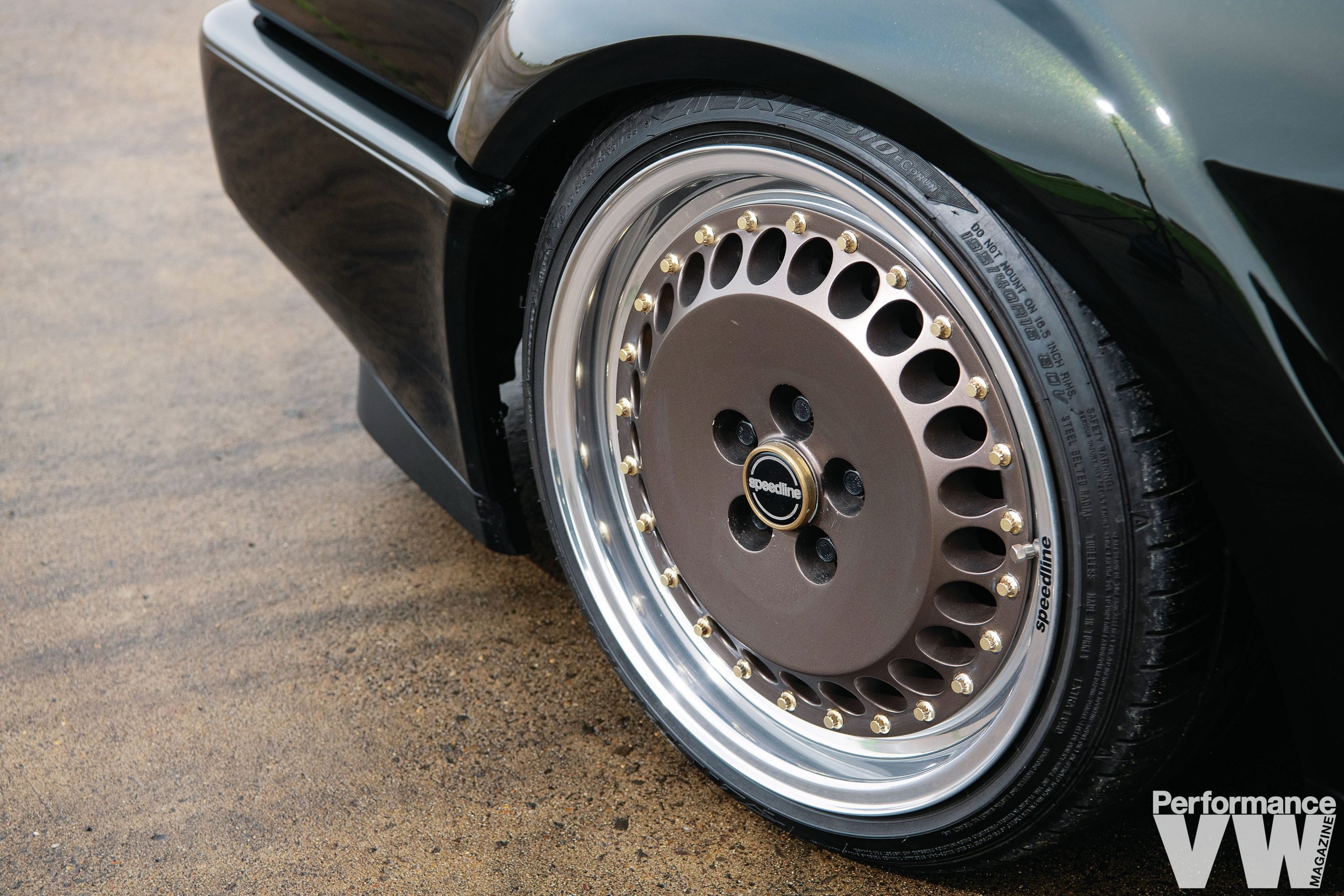
In the meantime, the bare shell had departed the barn after hours of careful restoration by Alex’s brother Arthur – a painter now working for Jaguar Land Rover’s engineering department. Each swage line has been sanded back to its freshly pressed shape, with some subtle re-working thrown into the mix. Look closely and you’ll notice the mirrors are no longer mounted on the shoulderline of the doors, the side repeaters have disappeared from the wings and the rear spoiler has been subtly re-profiled into a sharper edge. Concours standard work, but not one for the clipboards.
“I brainstormed colour ideas with my brother, asking him for input on my ideas whether they’d match the parts I’d had powdercoated,” he recalls. “We came up with two options – one was a Range Rover black with a purply-red tinge, the other was a Mitsubishi colour – but neither looked the same when they’d been sprayed out. Then he found this Porsche Perez Green, and I fell in love with it.”
Family input didn’t stop there. Alex set sights on adding bronze accents against the green, and Arthur suggested trying the rose gold used for Range Rover special editions to pick out some of the trim. A small group of parts – the badges, strut top mounts, the brake servo and wheel centres – were selected as standouts, while hoping that the result wouldn’t be overkill. That careful balance has paid off perfectly, though he admits he wasn’t sure at first.
“The car looked black when I got it outside, and I was a bit beat up, but when it’s sunny it really does pop,” Alex continues. “The colour looks different based on the angle of the panel, it’s green with tinges of gold in some places. I like how it intrigues people to come over and have a closer look.”
With that laser focus on fit and finish, any trim pieces had to meet similarly high standards. All of the weathered rubber and glass was replaced, where necessary, with either new or mint condition used parts – including sourcing a green-tinted windscreen which, if he’d bought a box-fresh one, would have dumped $1,000 plus US import fees into the Corrado’s bill. Alex even went to the trouble of building his own door rubbers, matching the cross-selections from the car and cutting them to the right size himself.
“Nobody had done pop-out windows on the Corrado, so I started wondering if I could make some myself,” he explains. “I bought a couple of sets from the place where I’d found the windscreen, then I went around buying loads of parts from other cars with pop-outs to make a kit. The hinges are from a Fiat Panda, I made my own trim to cover them using a shrinker-stretcher to hide everything and my brother painted them. I like how clean and simple it looks without the rubber seals.”
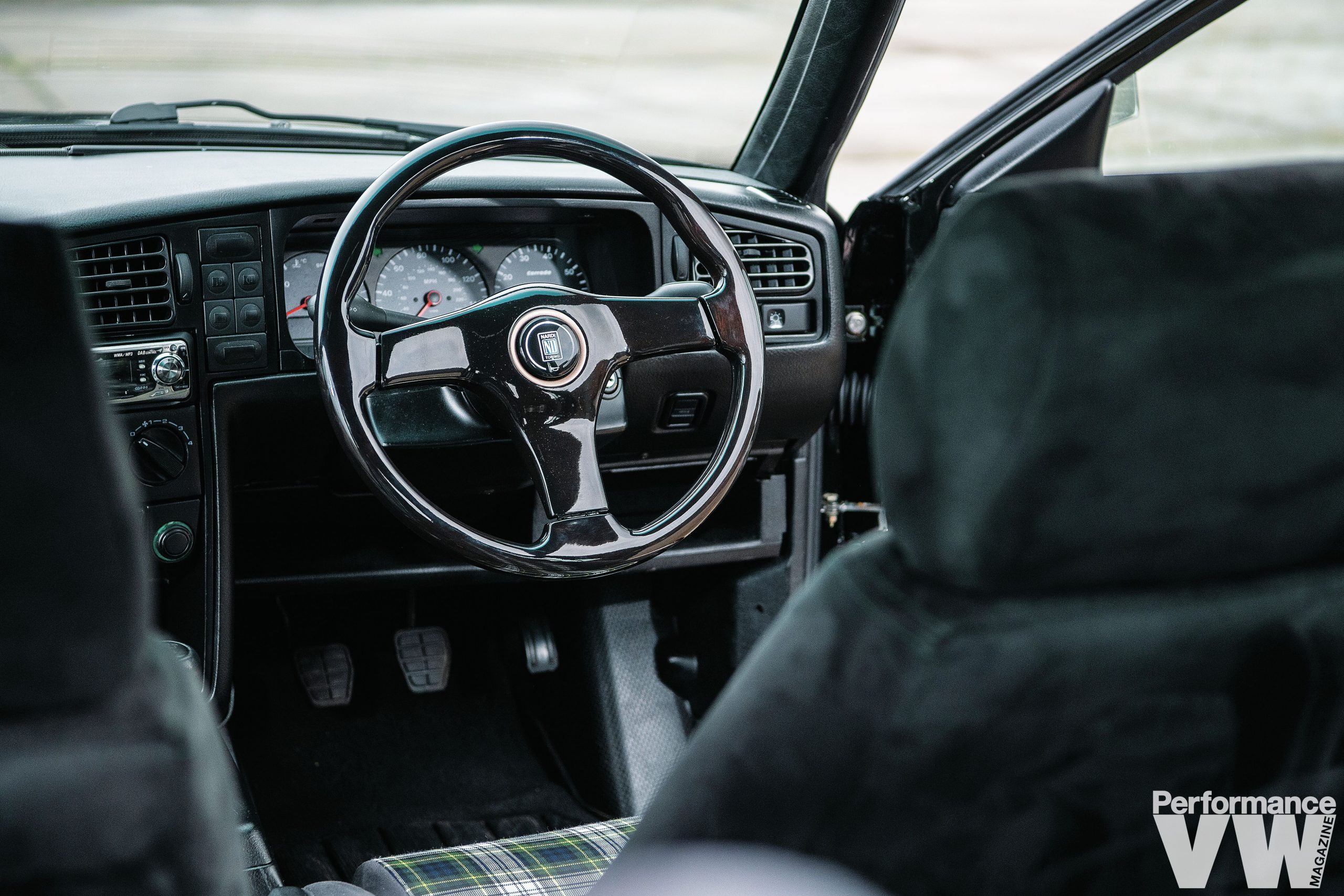
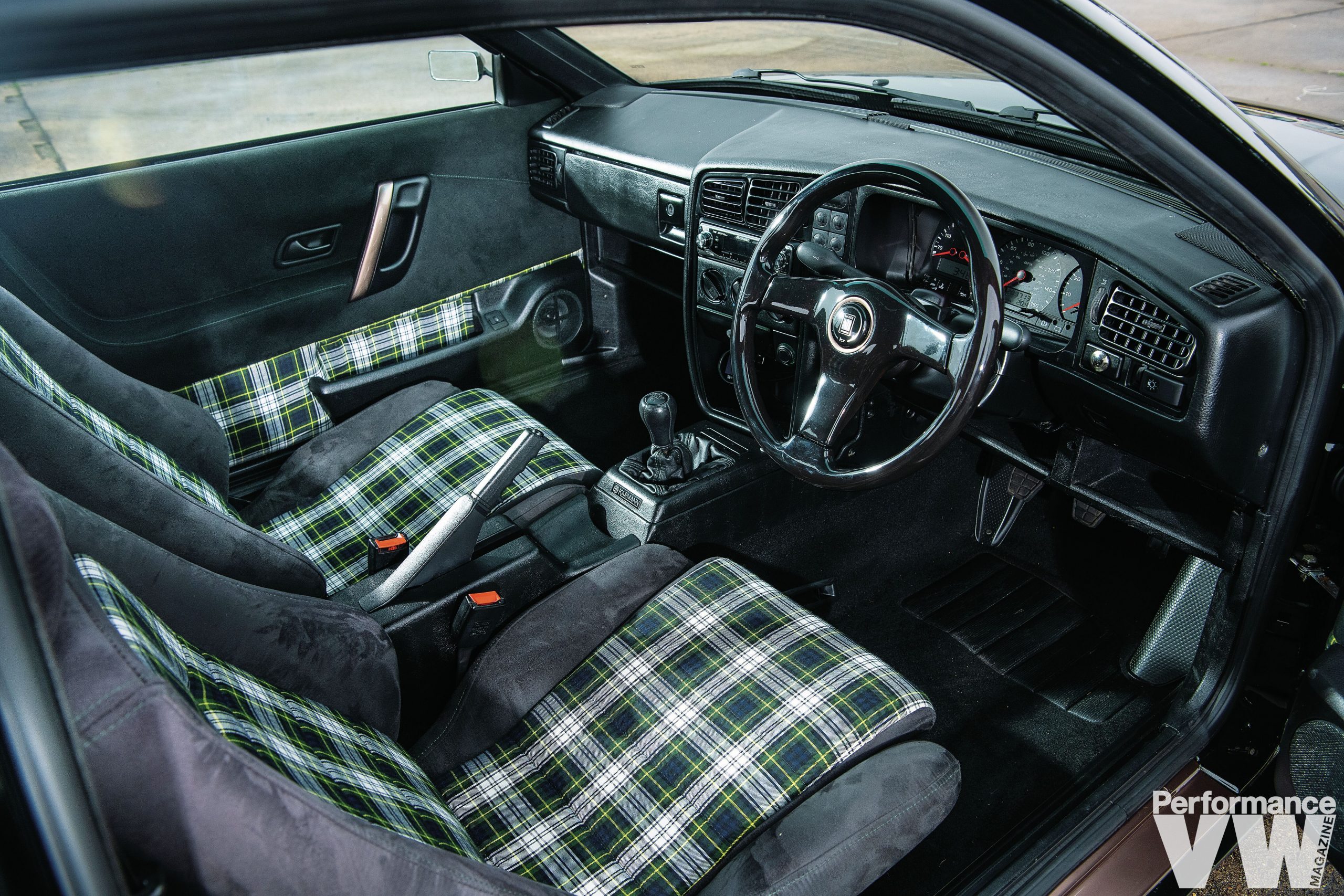
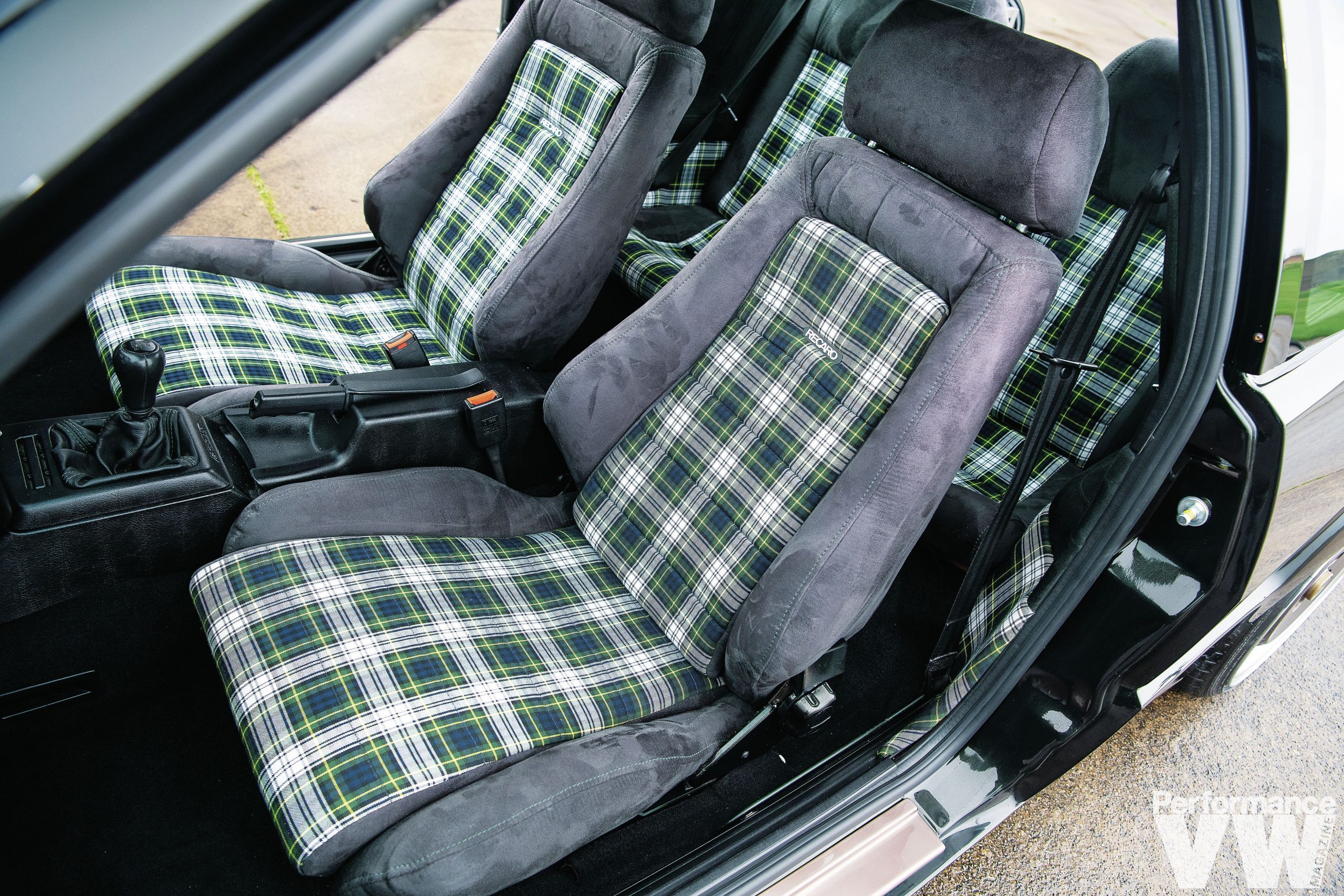
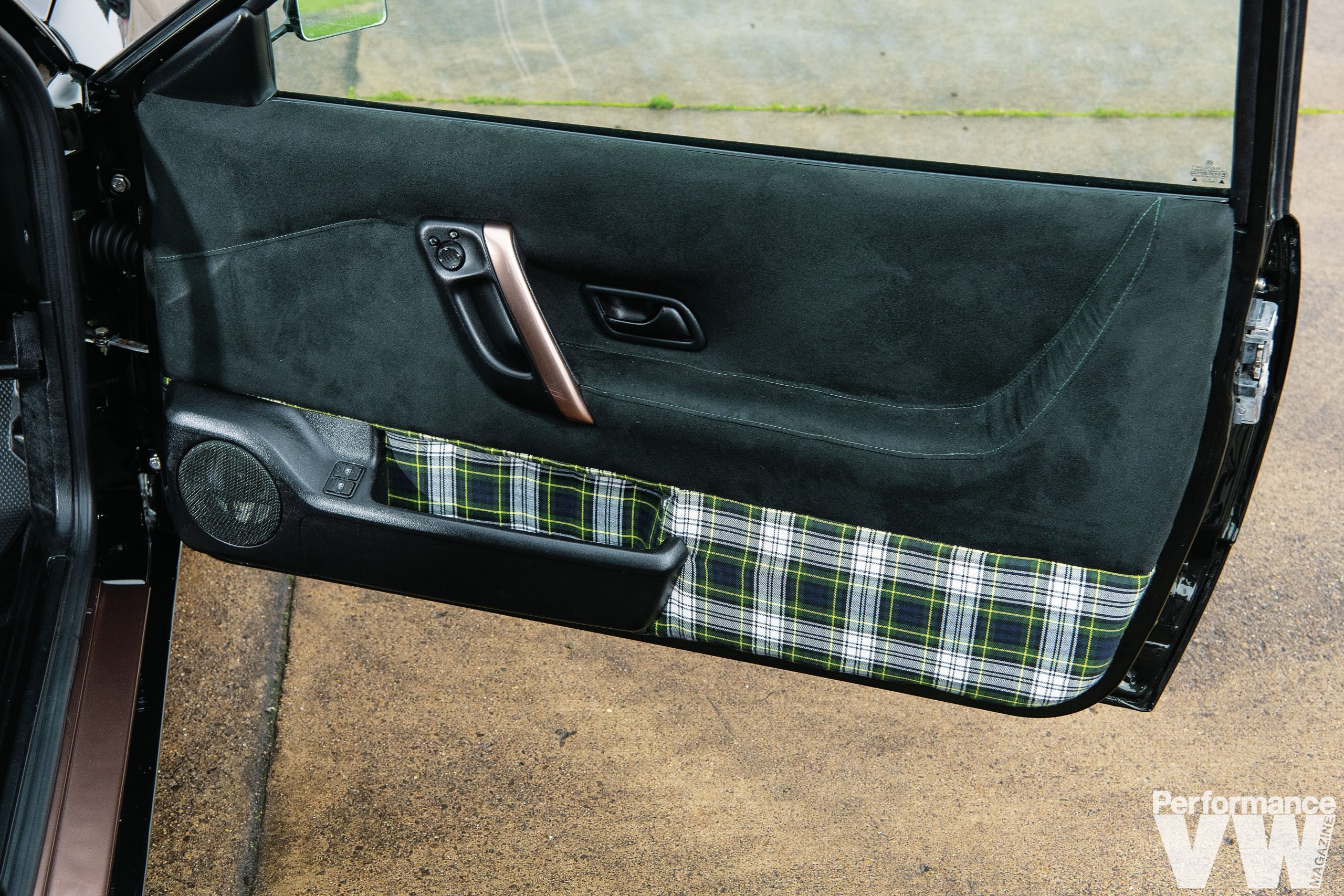

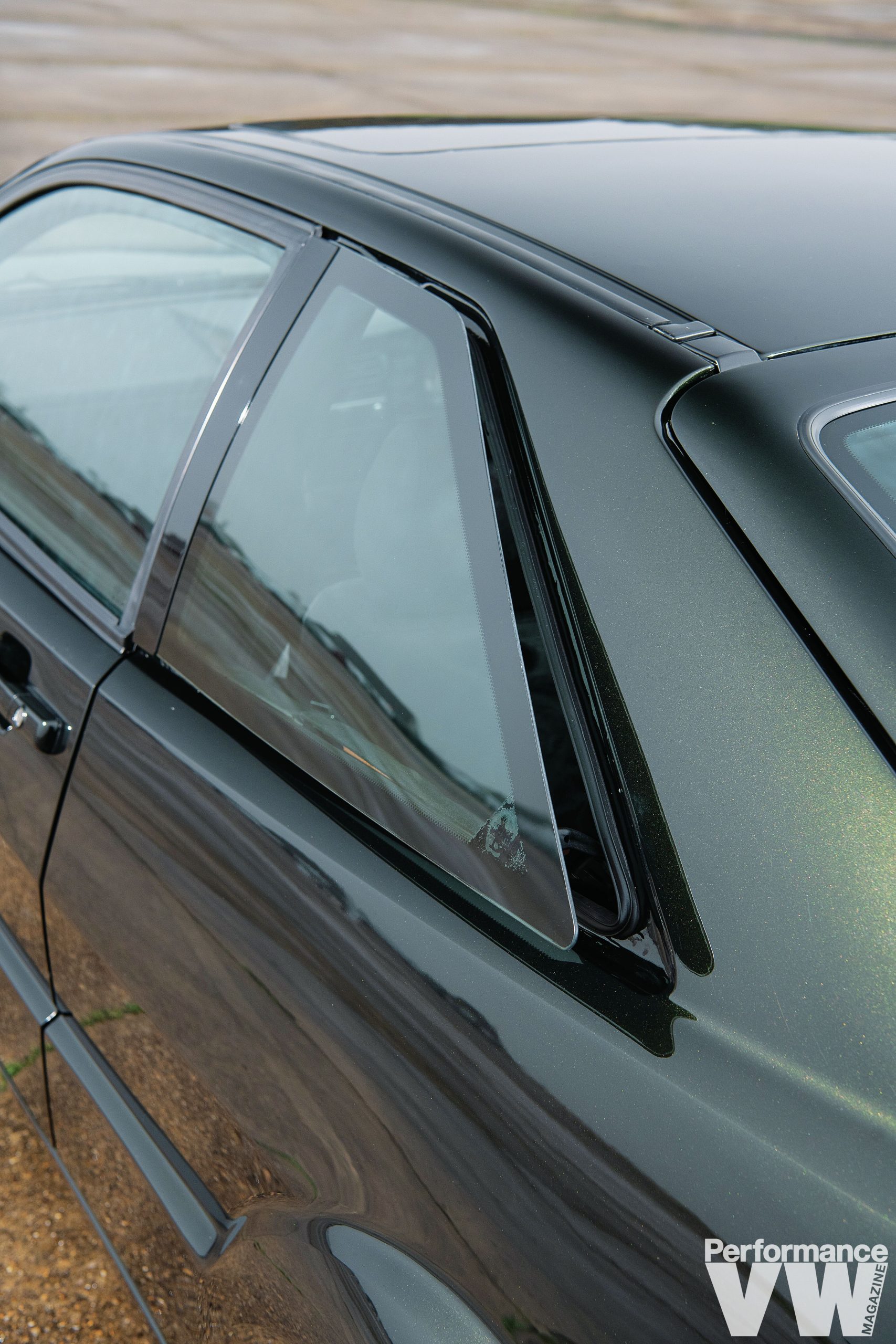
The interior hasn’t escaped a similarly exhaustive overhaul. Used parts were never going to make the grade, and Alex was never overly keen on the chunky factory seats. Saving for a house clipped some of the budget for replacing them and, with a retrim looking inevitable, he sourced the Recaros from an Astra GTE instead of picking from the Volkswagen parts bin – as a bonus, they were yet another local find in Banbury.
“I was looking for tartan fabric on eBay, and I found this one with white, a couple of greens and yellow, which matched the brakes. Then, after I’d had the seats done, I was back looking at what I could do to the car and I realised even the best Corrados don’t have painted fuel tanks. I had to do something with that,” he explains, crouching at the rear bumper.
“My brother said the plastic could be quite porous, so paint might not stick and it could end up peeling and looking messy. I had loads of fabric left over, so I took it to my nan’s and asked her to make basically a bag that goes over the tank. She looked at me like I’d gone mad, but it looks smart and it’s never been done before.”
For an OEM+ build, there’s a load of customisation woven into the finished cabin. Alex went to the effort of stripping the Nardi steering wheel and staining it a darker colour before re-lacquering and baking it seven times to get the glossy finish he wanted. A handful of parts have been painted in rose gold and green to match the bodywork, while others have been polished or simply re-coated in black to bring them back to life.
There are some nods to the era that inspired him too. Pioneer’s iconic ‘dolphins’ display head unit was a turn-of-Millennium must-have, but not an easy thing to track down in full working order. It’s paired with Alpine speakers and home-made boot install, painted to match the bodywork. A bold move as those are the bits you see the most – with that engine up front, it’s no trailer queen.
“I’ve been quite delicate with it so far, but I’m starting to beat it up a bit now,” he smiles. “The plan was always to drive it, not put it in a garage and never use it. The ‘box is whining a bit and could do with an extra gear for cruising, but as soon as that’s done I’ll take it everywhere. I’ve built this to enjoy.”
He’s also enjoying the build itself. The completed Corrado has liberated some time to restore a low-mileage Mercedes Vito van in his garage at home, and he’s got plans to get back in the workshop more often once it’s done. The hobby, it seems, might just be about to go full circle and finally lure him into the world of automotive. With an obsession for nut-and-bolt perfection that could win even the most jobsworth clipboard-wielding judge’s seal of approval, we reckon he’s found his calling.
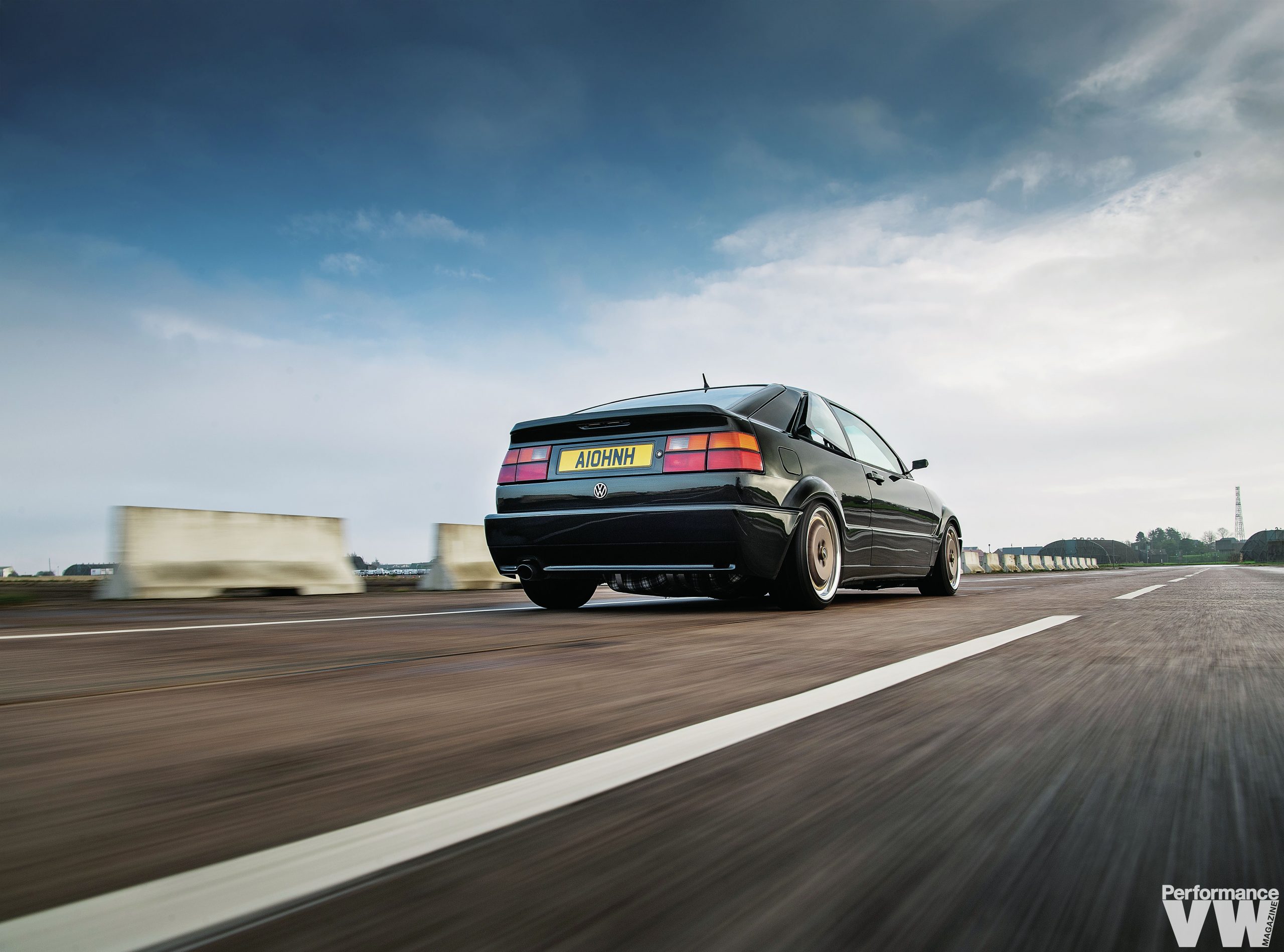
DUB DETAILS
|
ENGINE |
3189cc, 24-valve, VR6 (BHE) from Audi TT, full rebuild, Ramair induction filter, Trackslag de-cat downpipe, full Milltek exhaust system with single silencer, braided fuel hoses, Aluminium radiator with 8-inch and 10-inch Spal fans, Davies Craig digital thermatic fan switch kit, custom aluminium washer fluid, power steering fluid and expansion tanks, Powerflex engine mounts, rebuilt VR6 gearbox, rebuilt gear selector tower, organic clutch with braided hydraulic hose, brand new driveshafts painted body colour, painted engine and gearbox, polished valve cover, battery relocated to spare wheel well |
|
CHASSIS |
Custom (upsized to two-piece 16” split) Alfa Romeo 75 Speedlines, centres painted Range Rover Rose Gold, solid brass centre caps, gold bolts, 195/40 Falken ZE310 tyres. TA Technix air ride with full management, Powerflex bushes throughout, powdercoated subframe, rear swing arms and wishbones, new steering rack, VR6 calipers with Brembo discs, EBC YellowStuff pads (front), Mk4 Golf calipers with Brembo discs and pads (rear), brake calipers painted Porsche yellow, braided brake hoses all round |
|
EXTERIOR |
Fully restored shell including polyester spray filler and sanding, painted Porsche Perez Green, modified rear spoiler, side repeaters deleted, colour-coded door handles, custom pop-out rear quarter windows, fog lights and indicators tinted yellow, R32 grille badge, Range Rover Rose Gold details, stubby aerial, motorbike mirrors on custom mounts, pressed metal number plates, headlights restored with internals painted black and aluminium adjusters |
|
INTERIOR |
Astra GTE Recaro seats on custom subframes, custom retrim in black alcantara tartan print, carpets replaced with new, Nardi steering wheel with custom dark stain, black alcantara roof lining, all plastics re-painted in black, body-coloured boot install and interior parts (grab handles, glovebox handle, ashtrays, rear-view mirror, seat adjuster knobs), Range Rover Rose Gold kickplate and door handles, polished latches, Pioneer ‘dolphins’ head unit with remote, Alpine speakers throughout |
|
SHOUTS |
My brother Arthur for the knowledge, painting the car and other parts, Ray at Vintage Classic and Prestige for all the encouragement, use of his paint booth the endless amount of wisdom, TA Technix for the air ride, my sponsor – Kaos Detailing |
